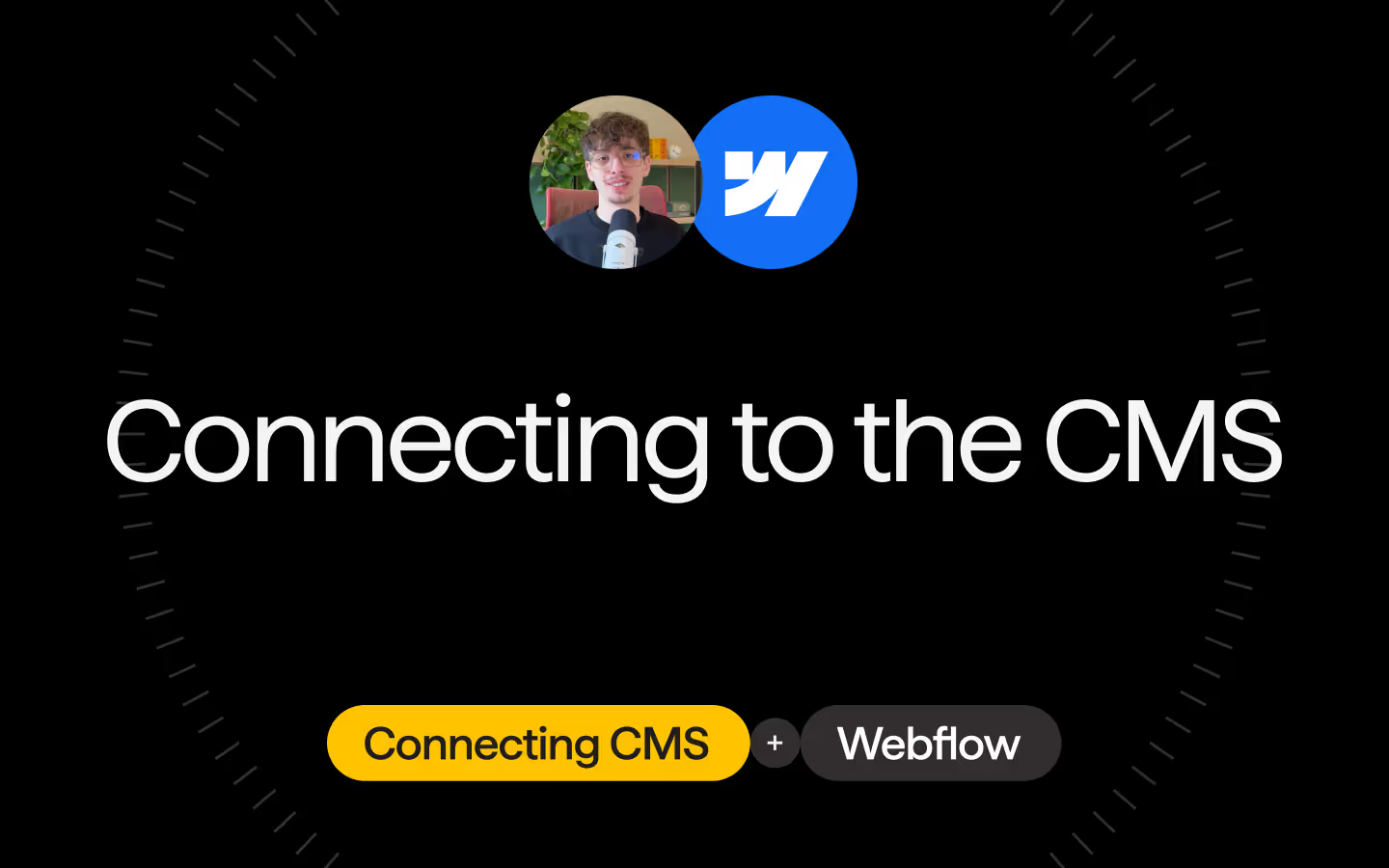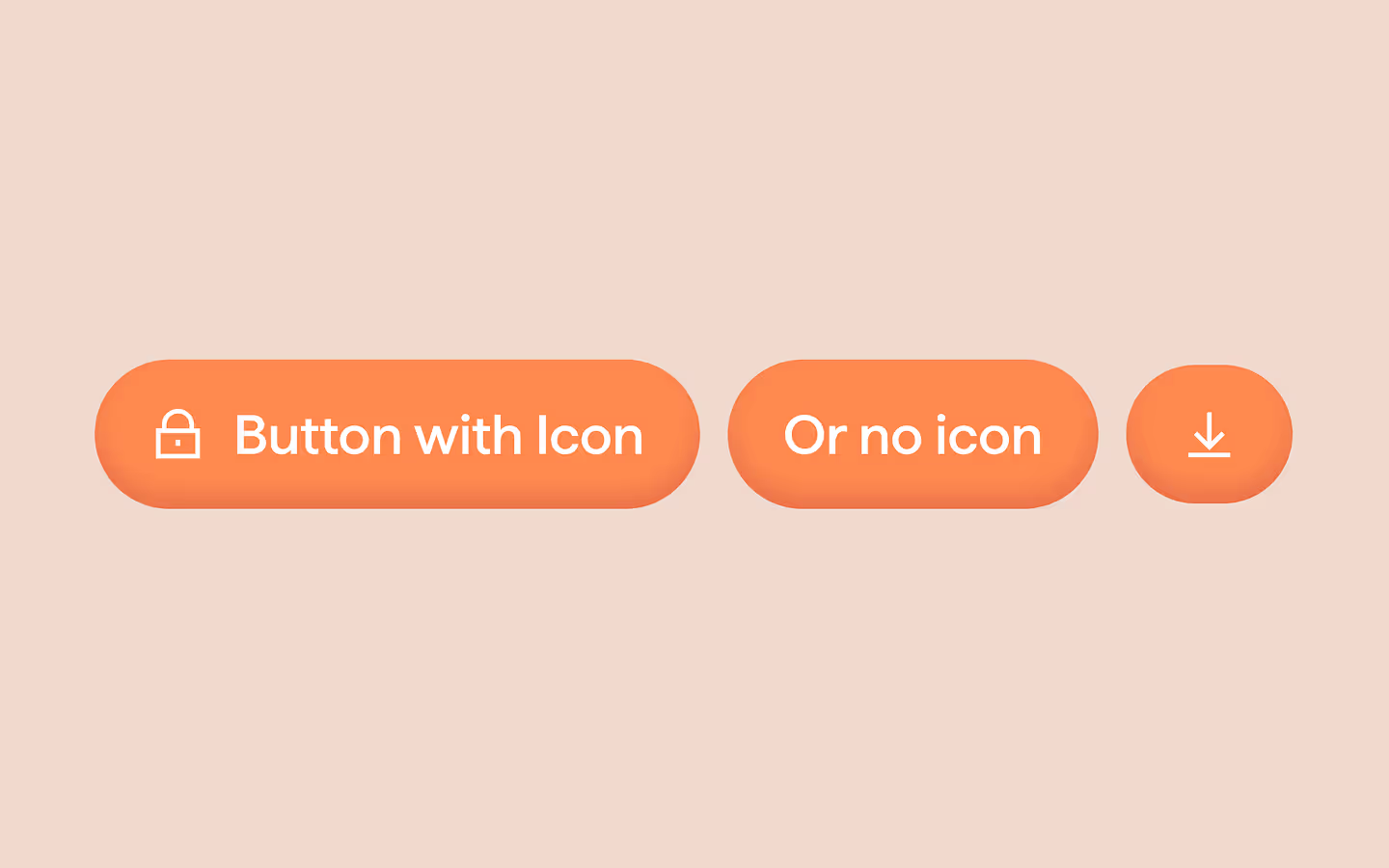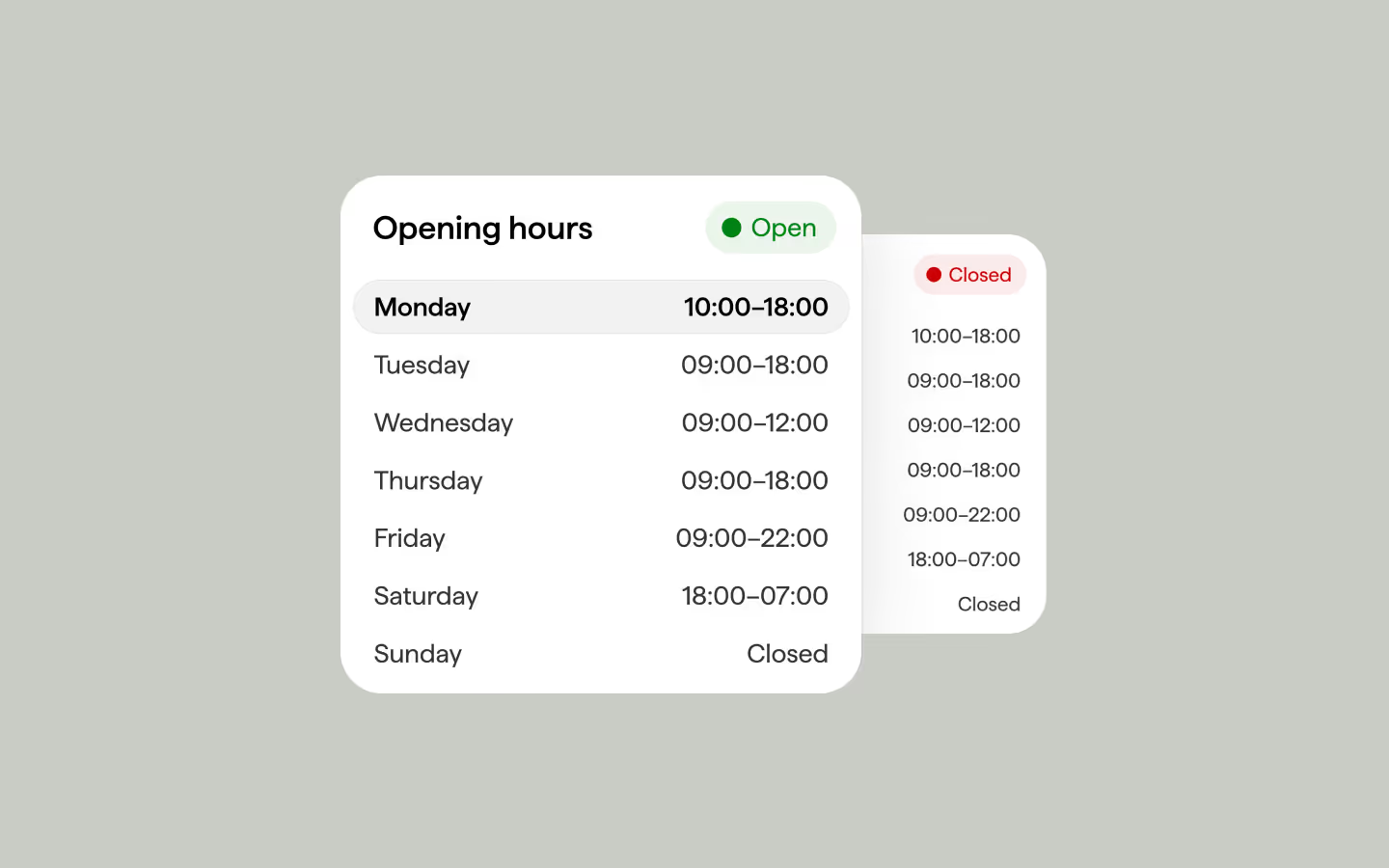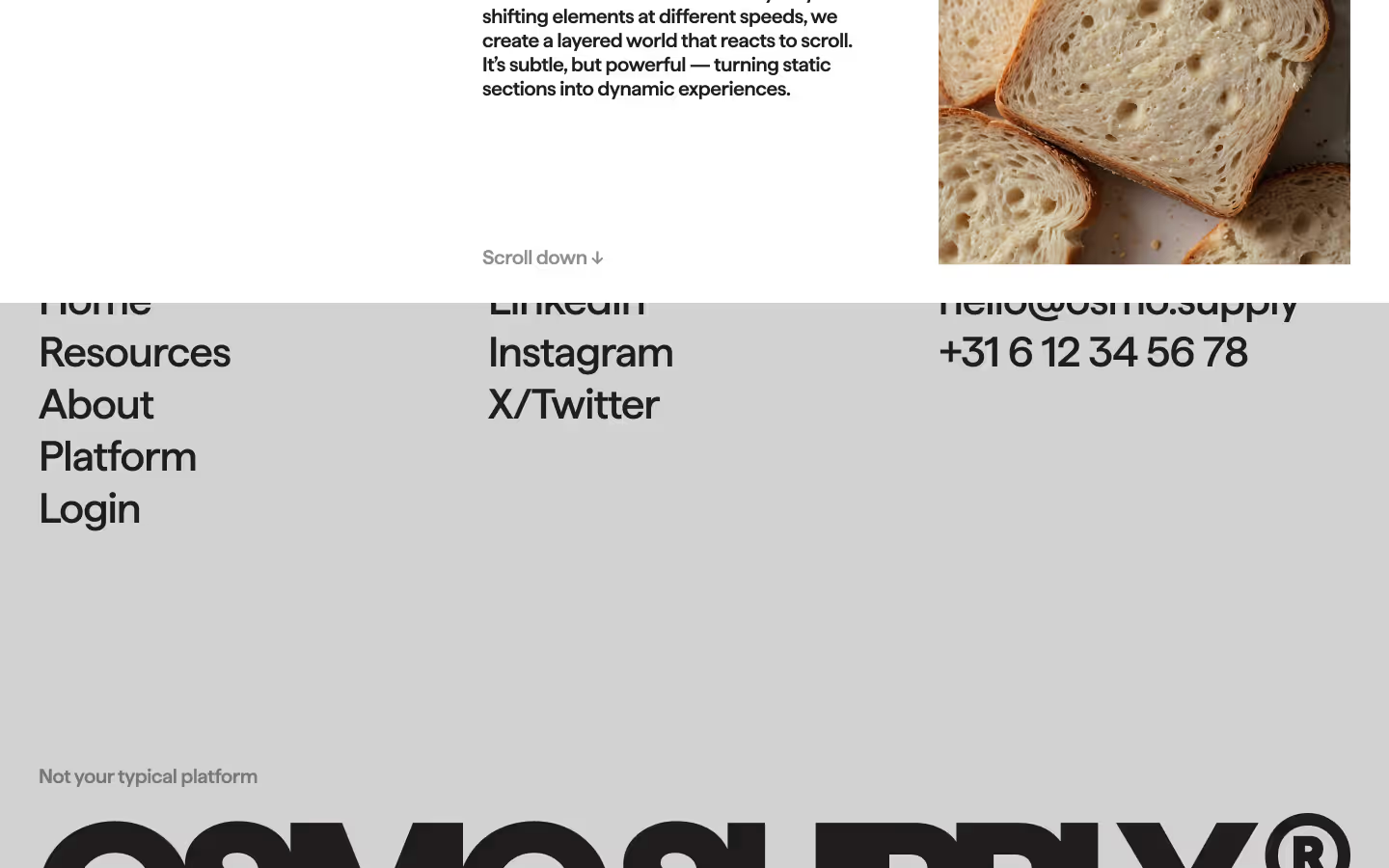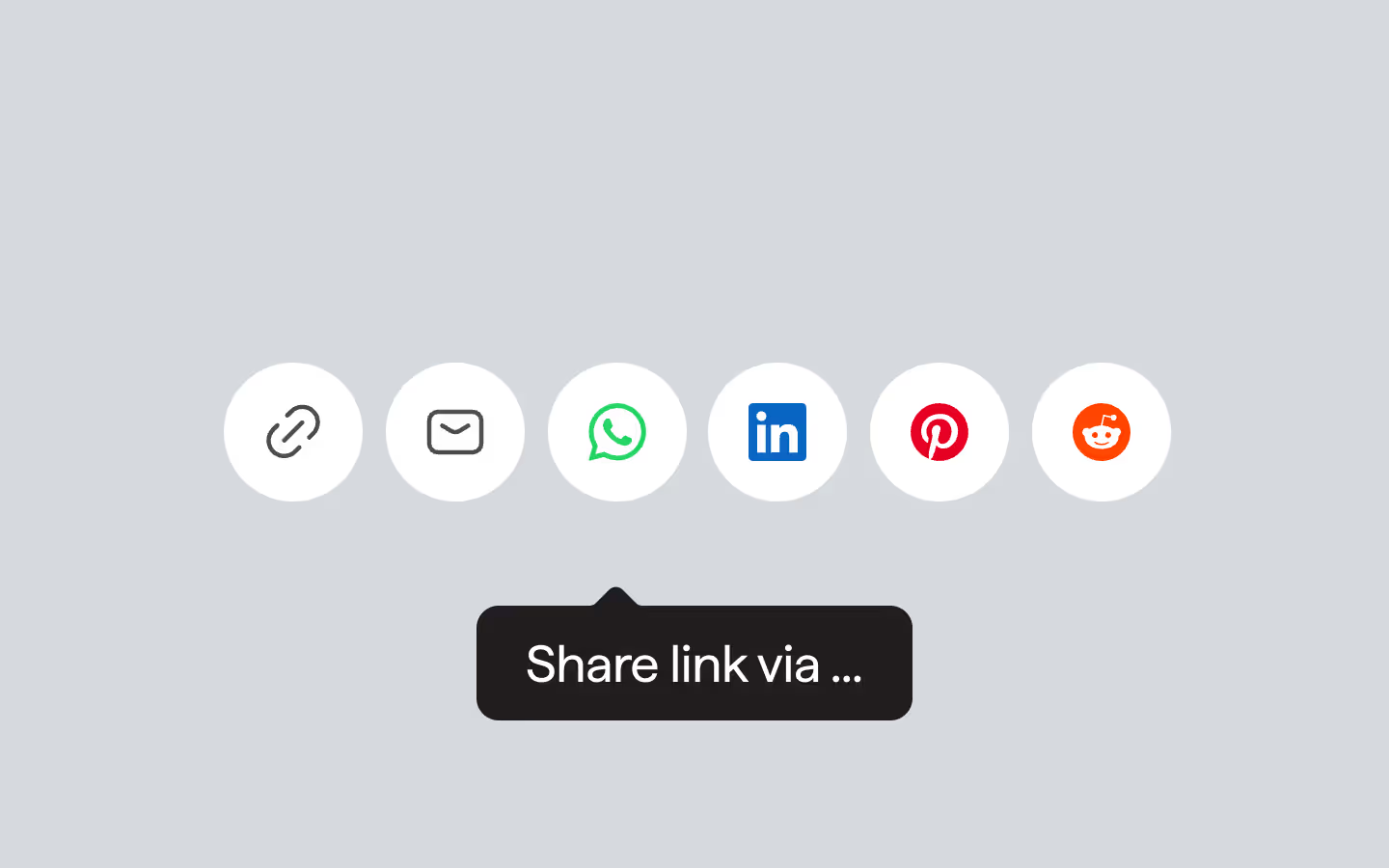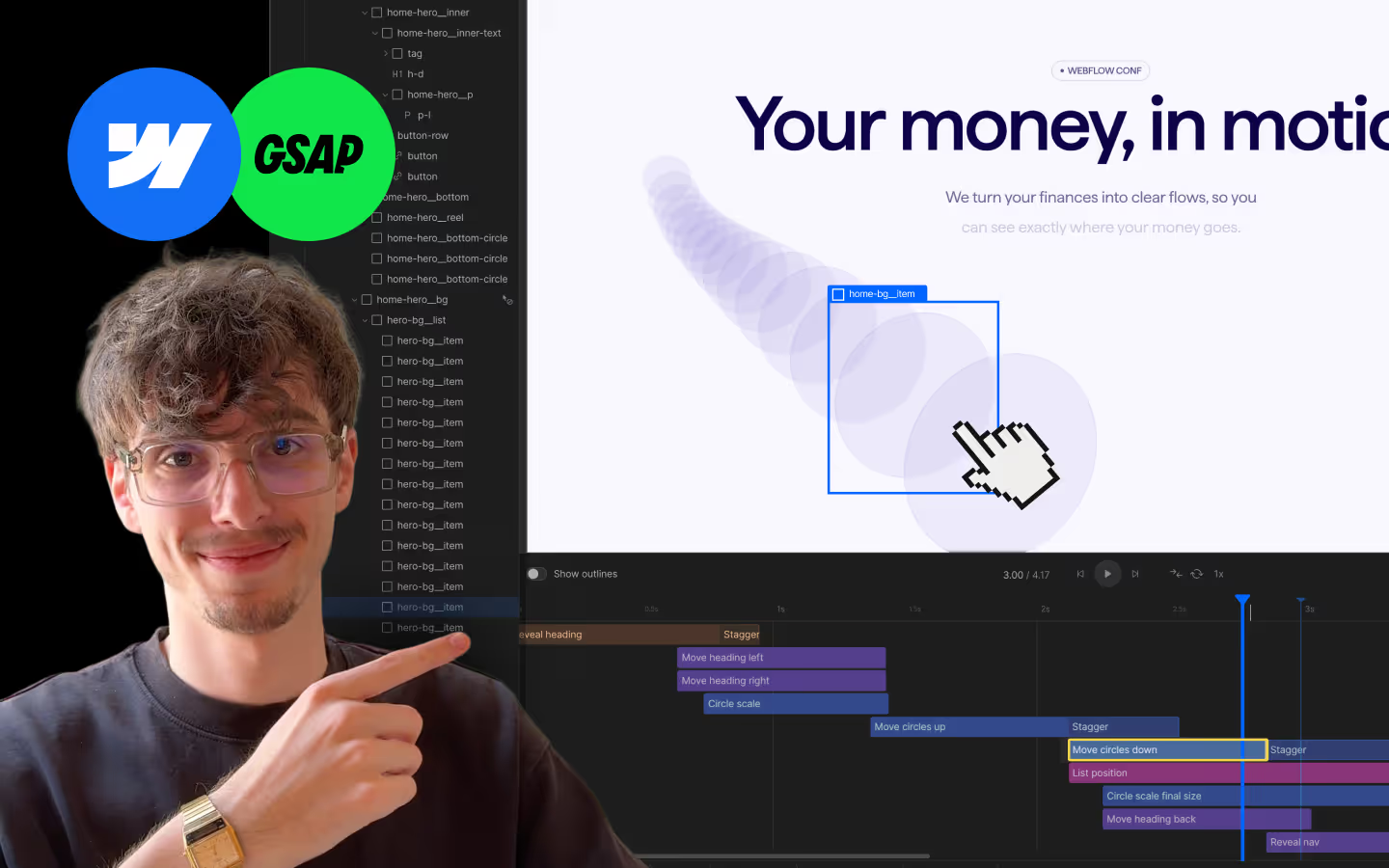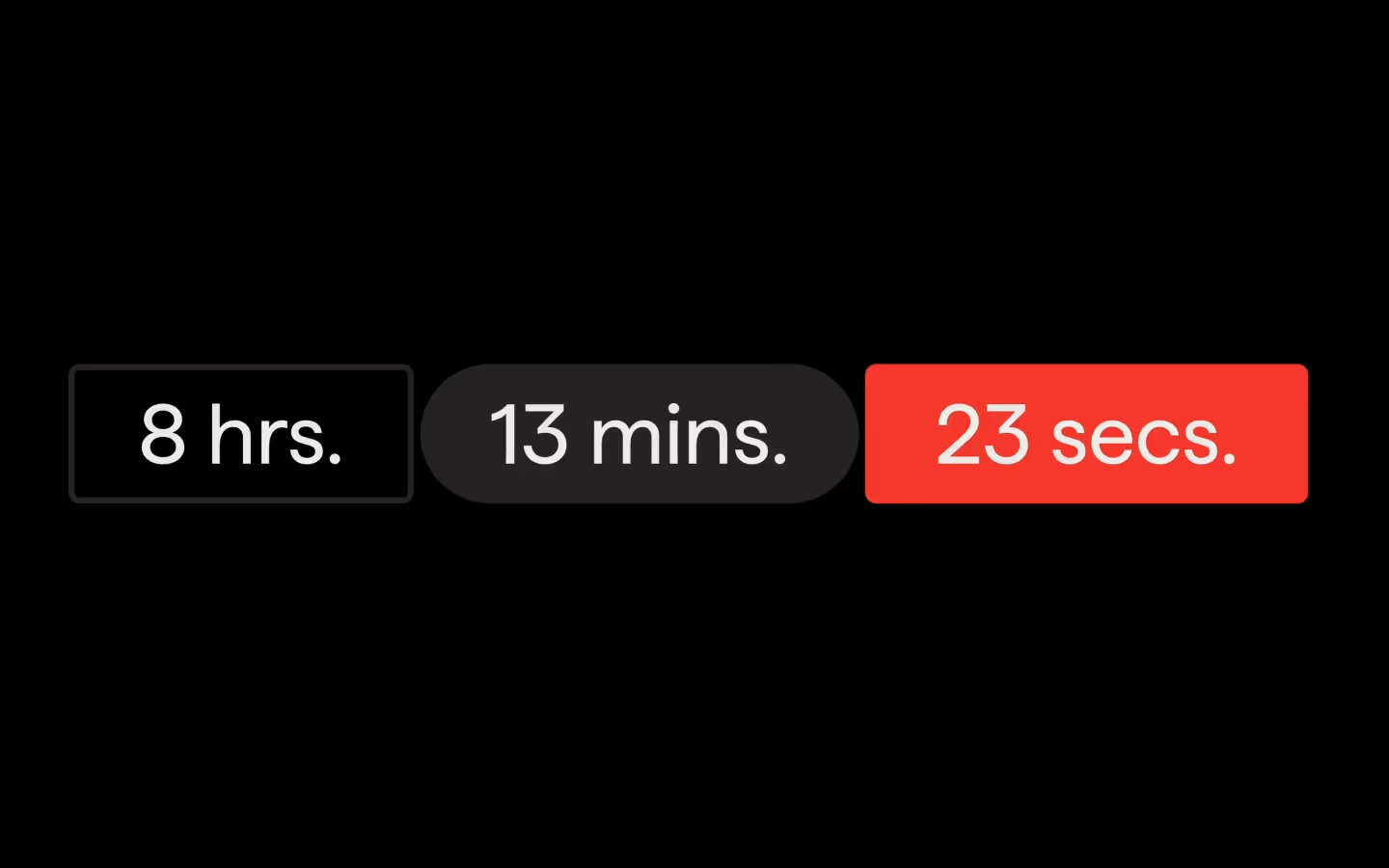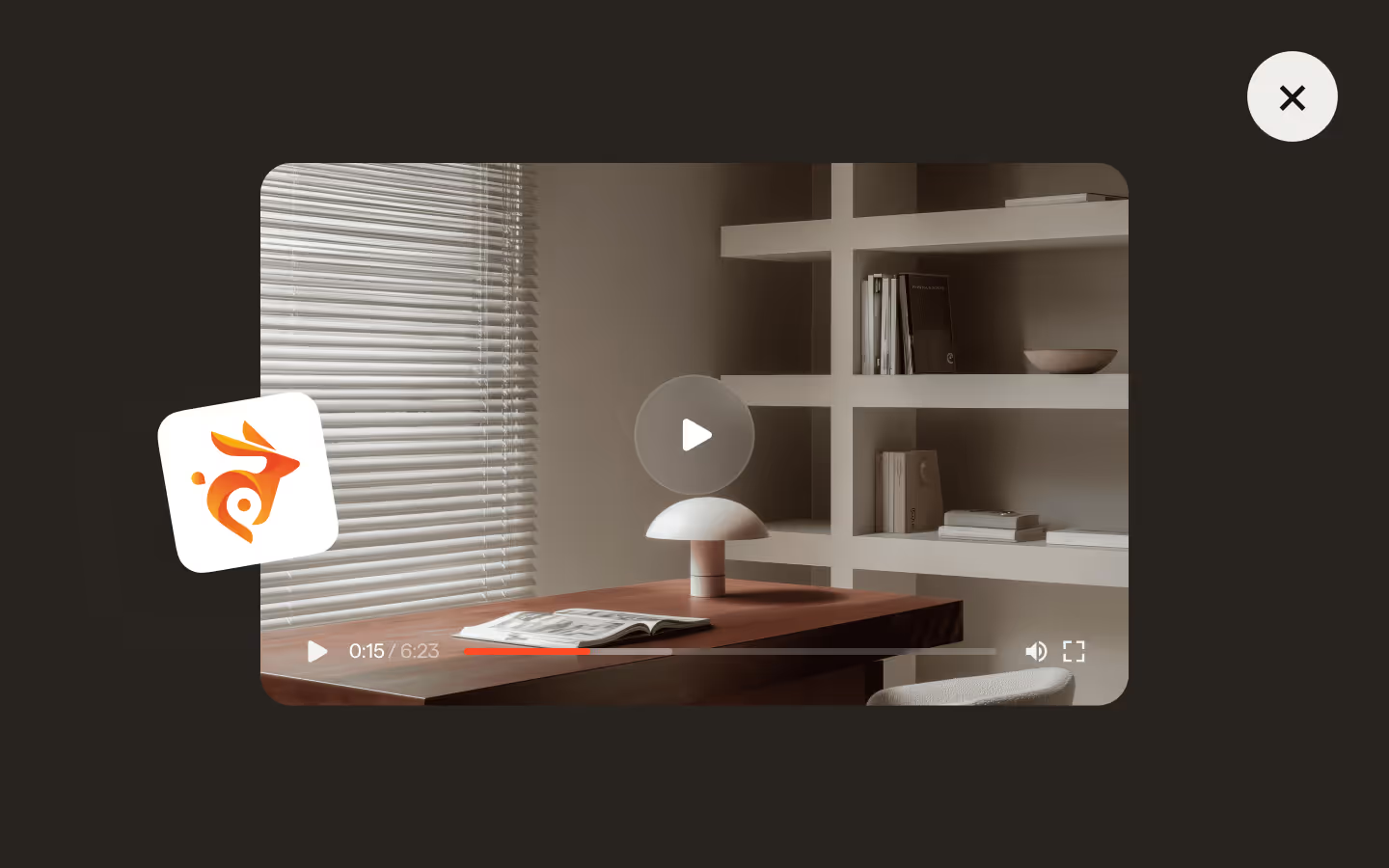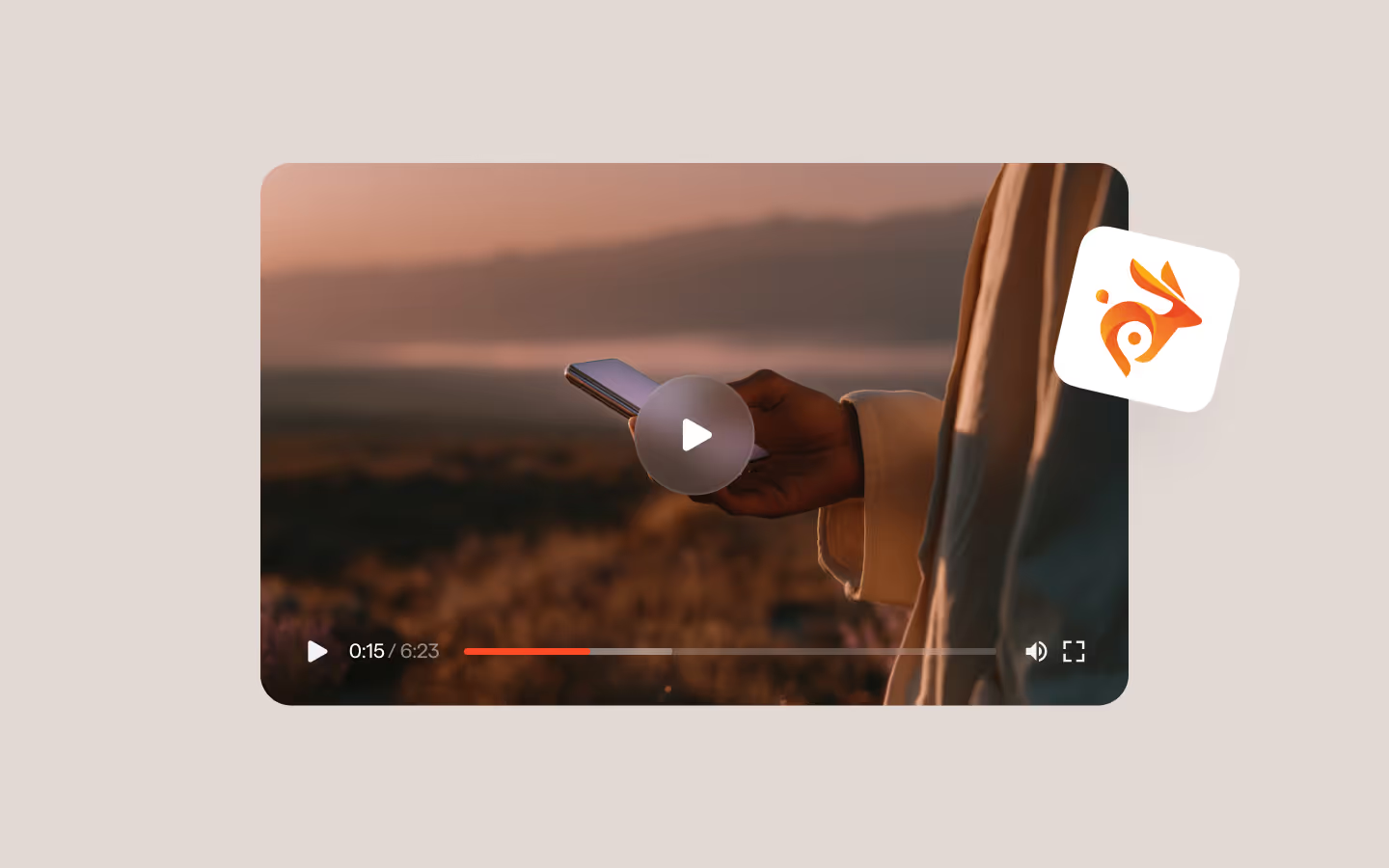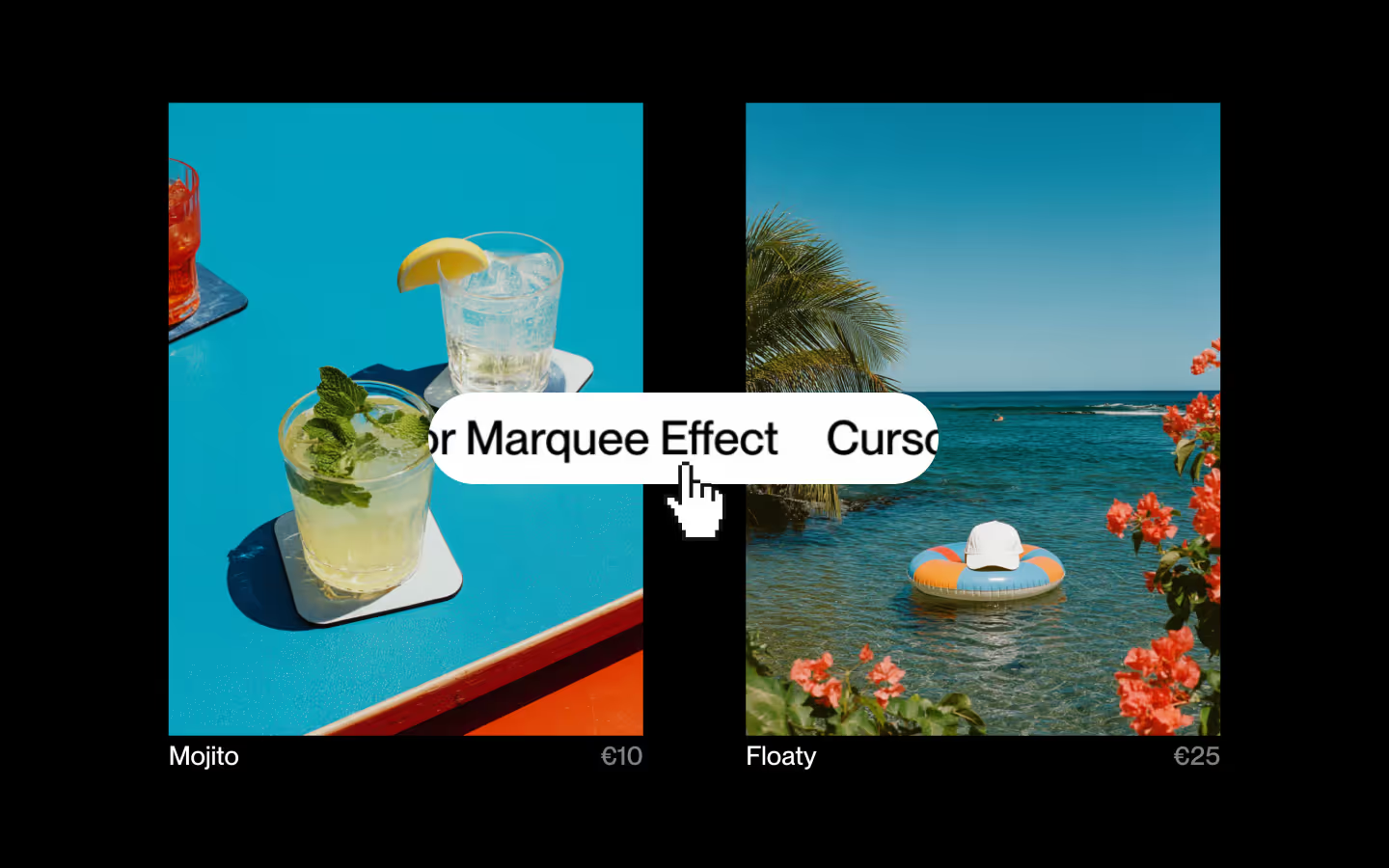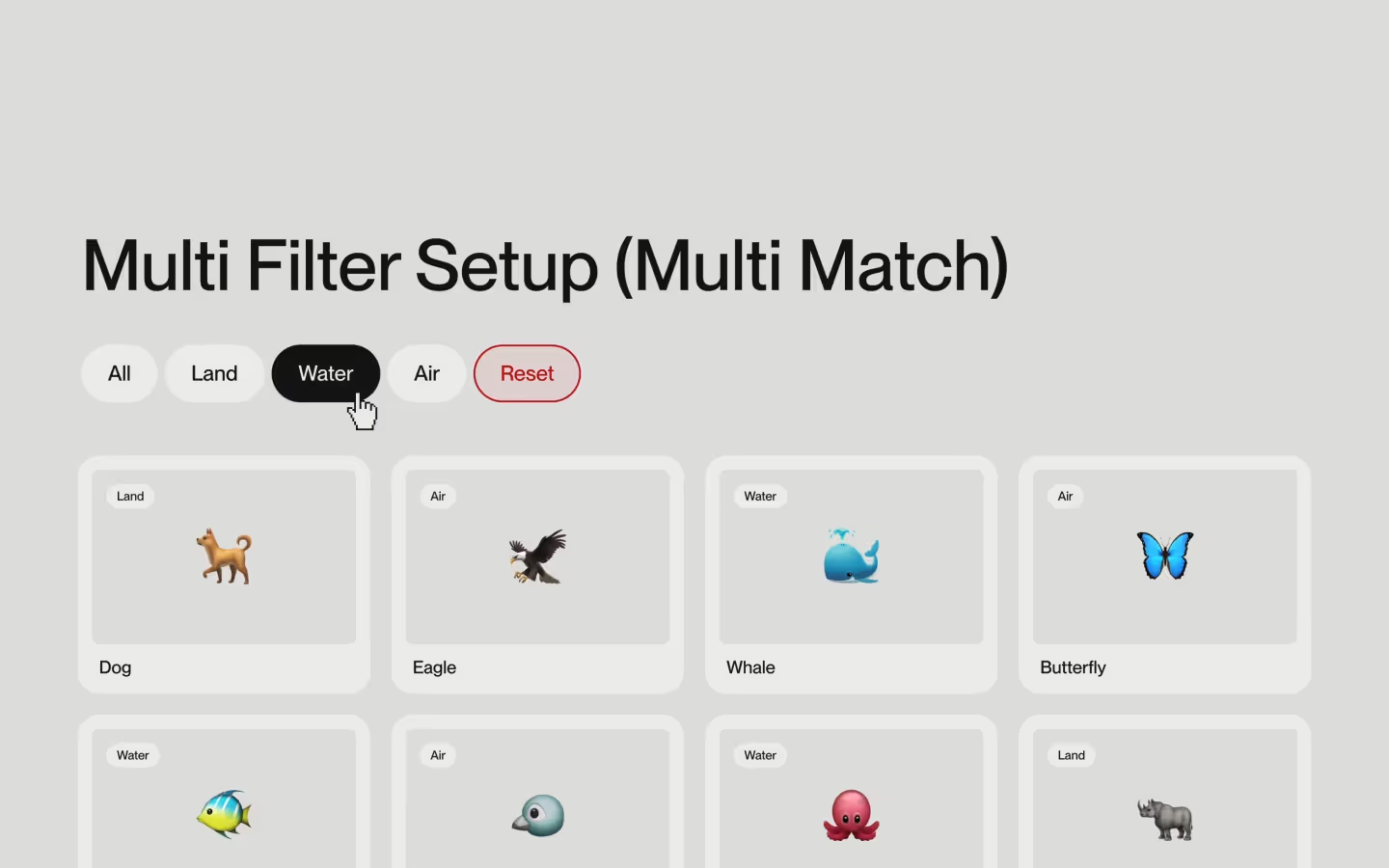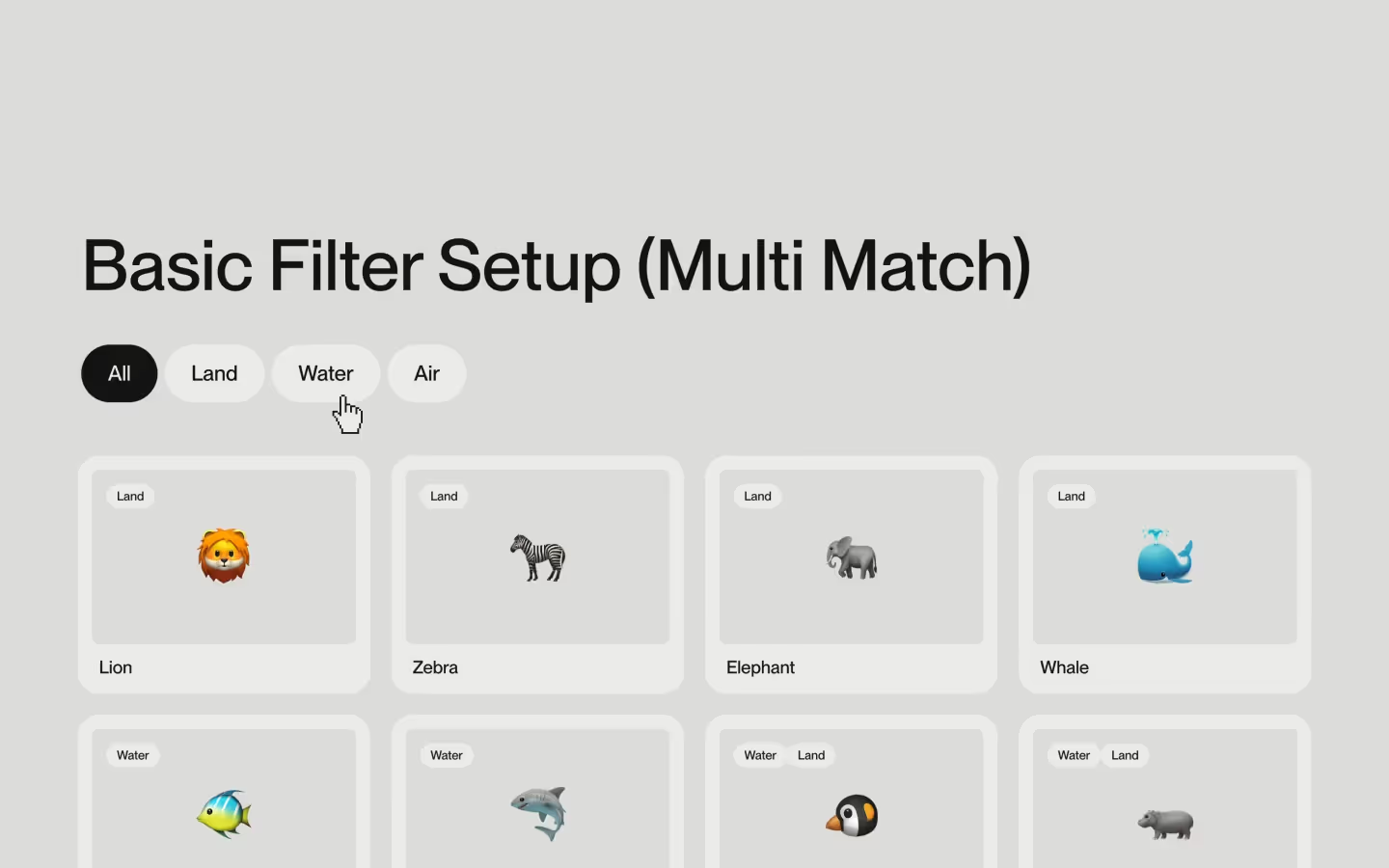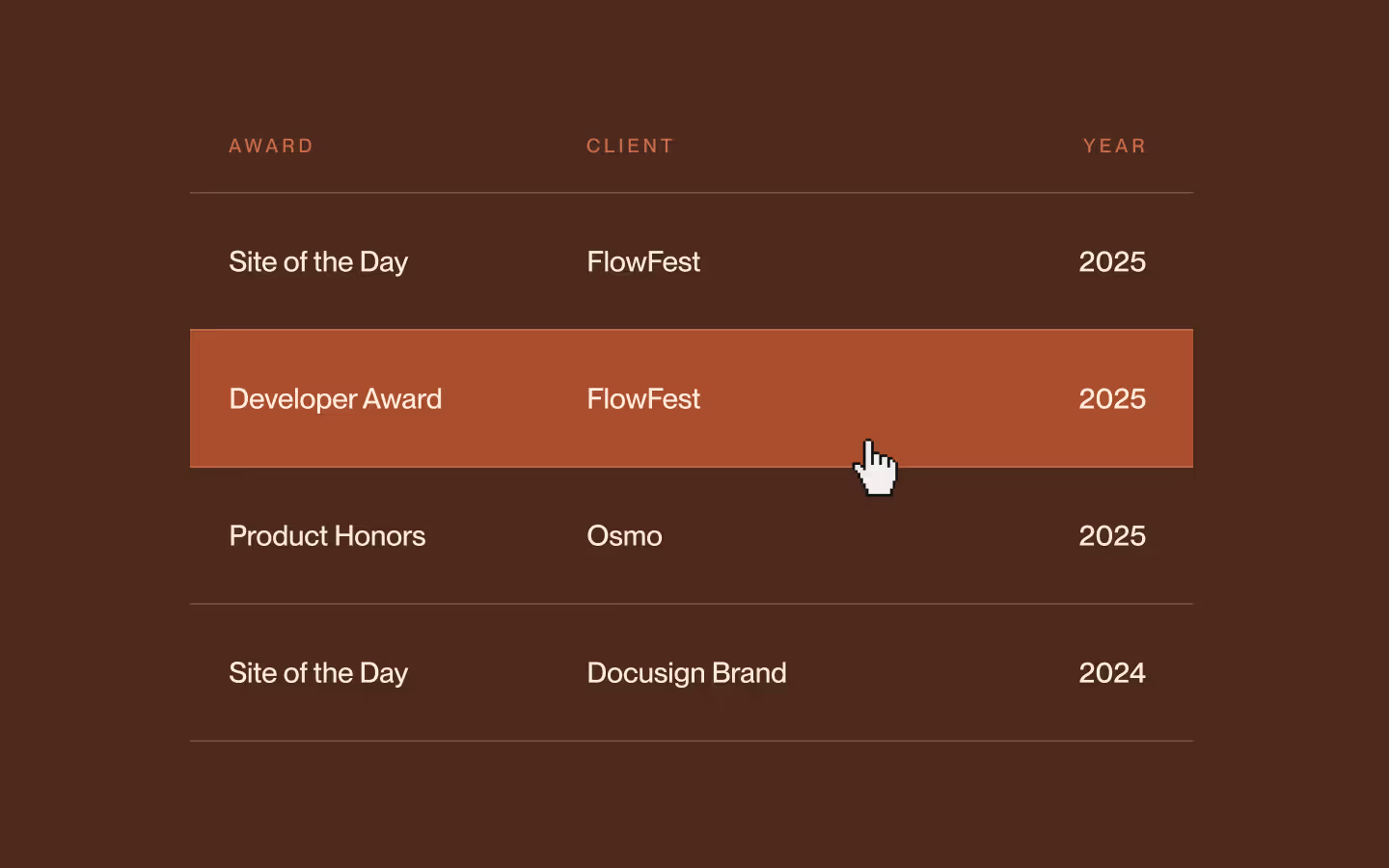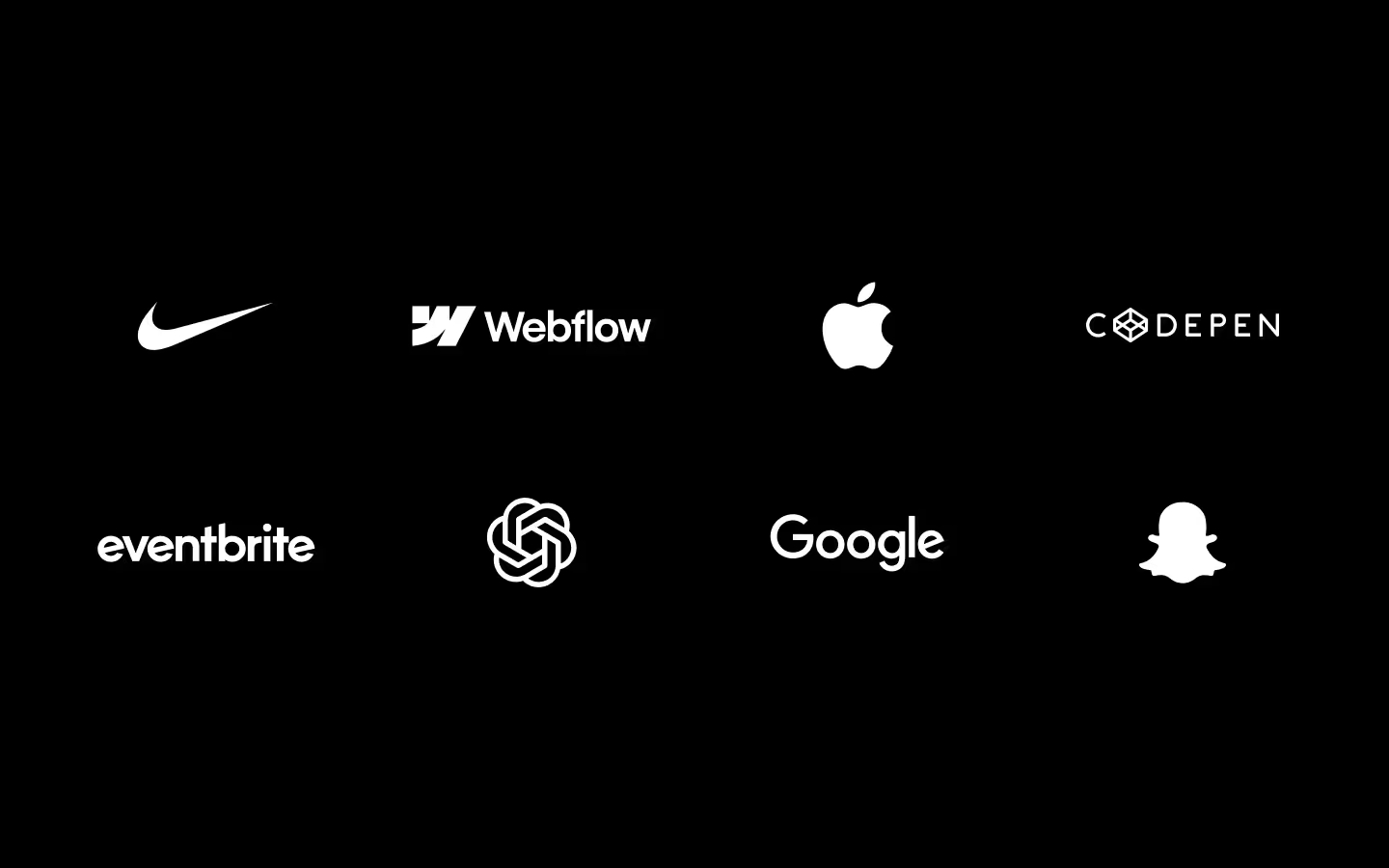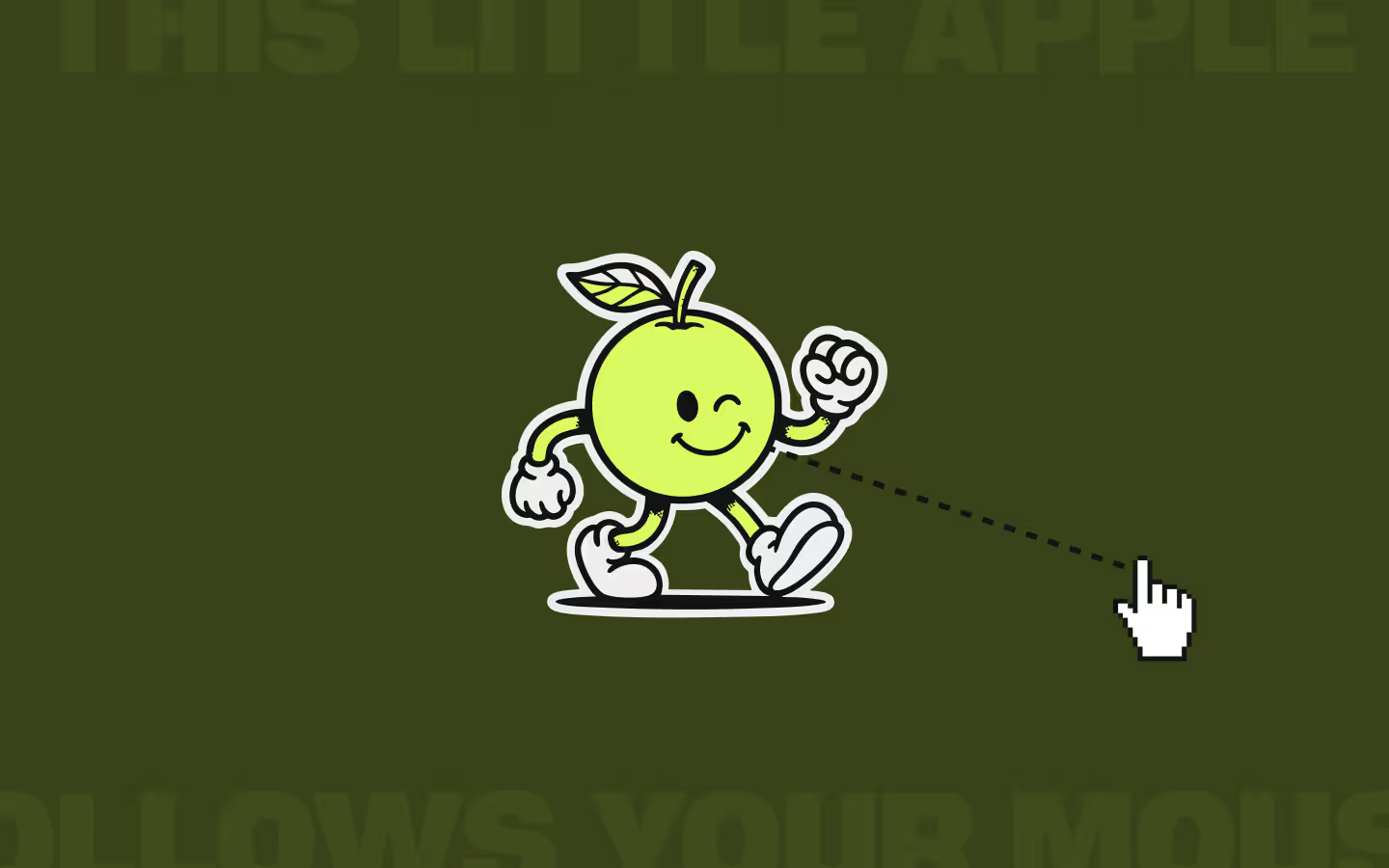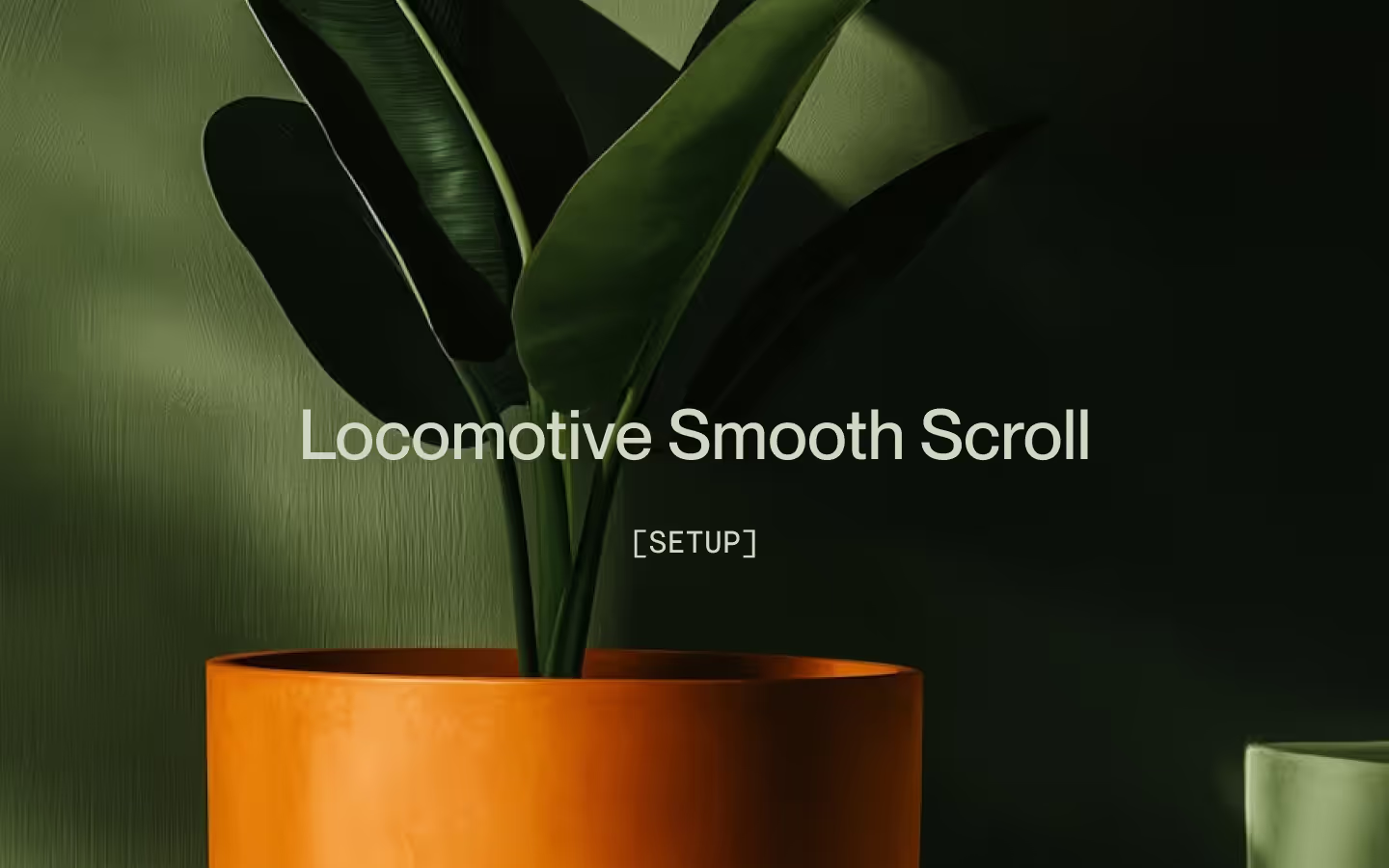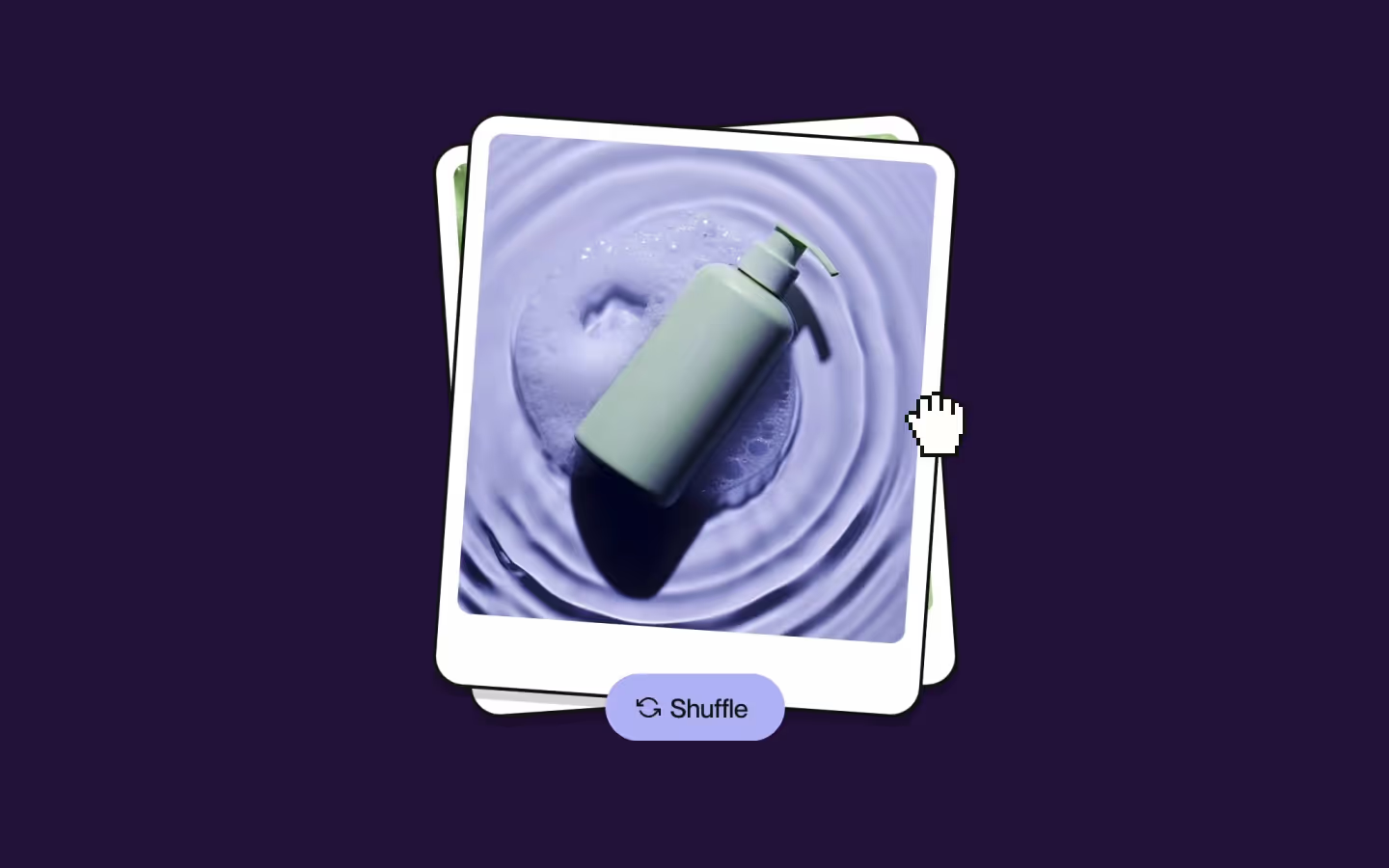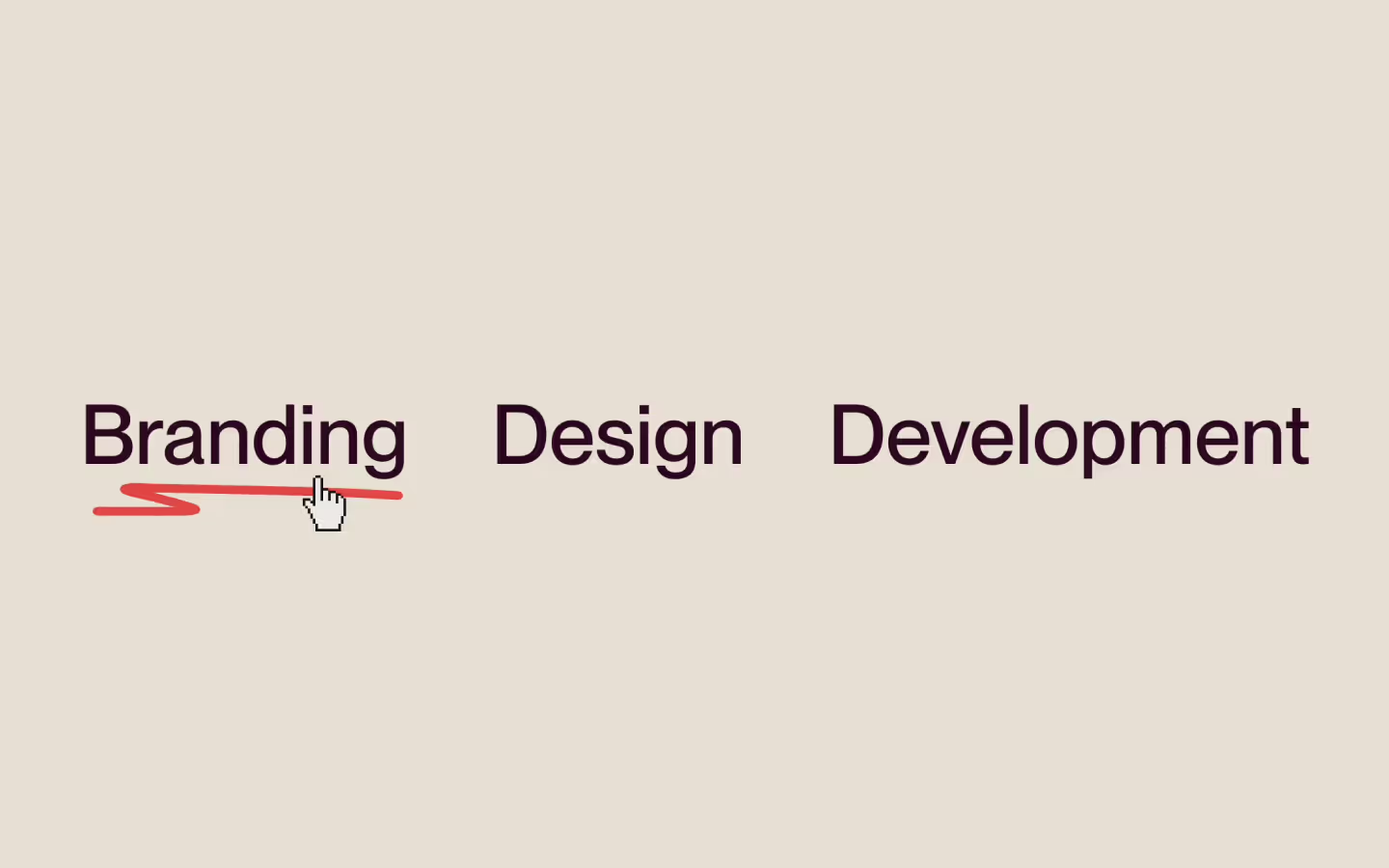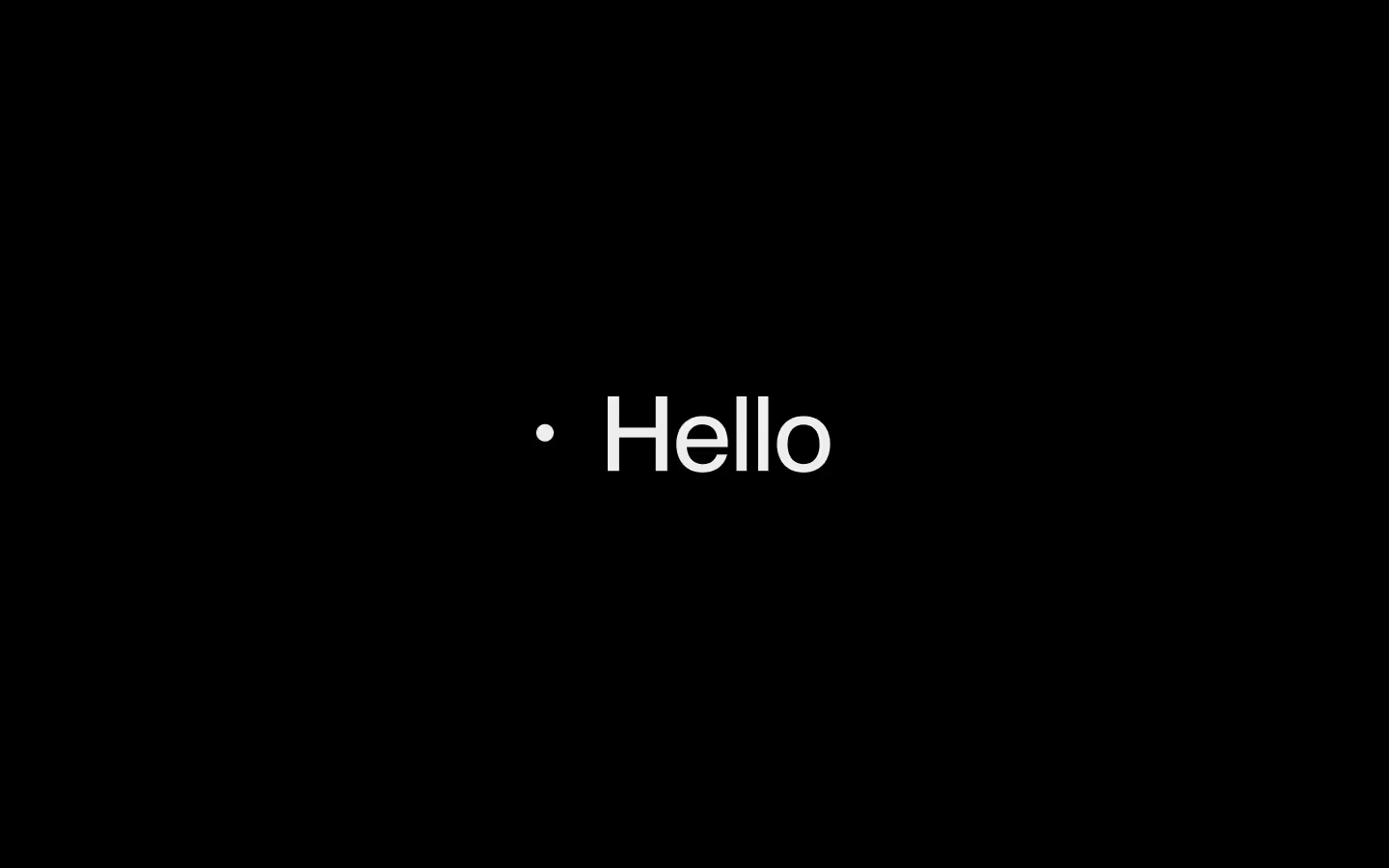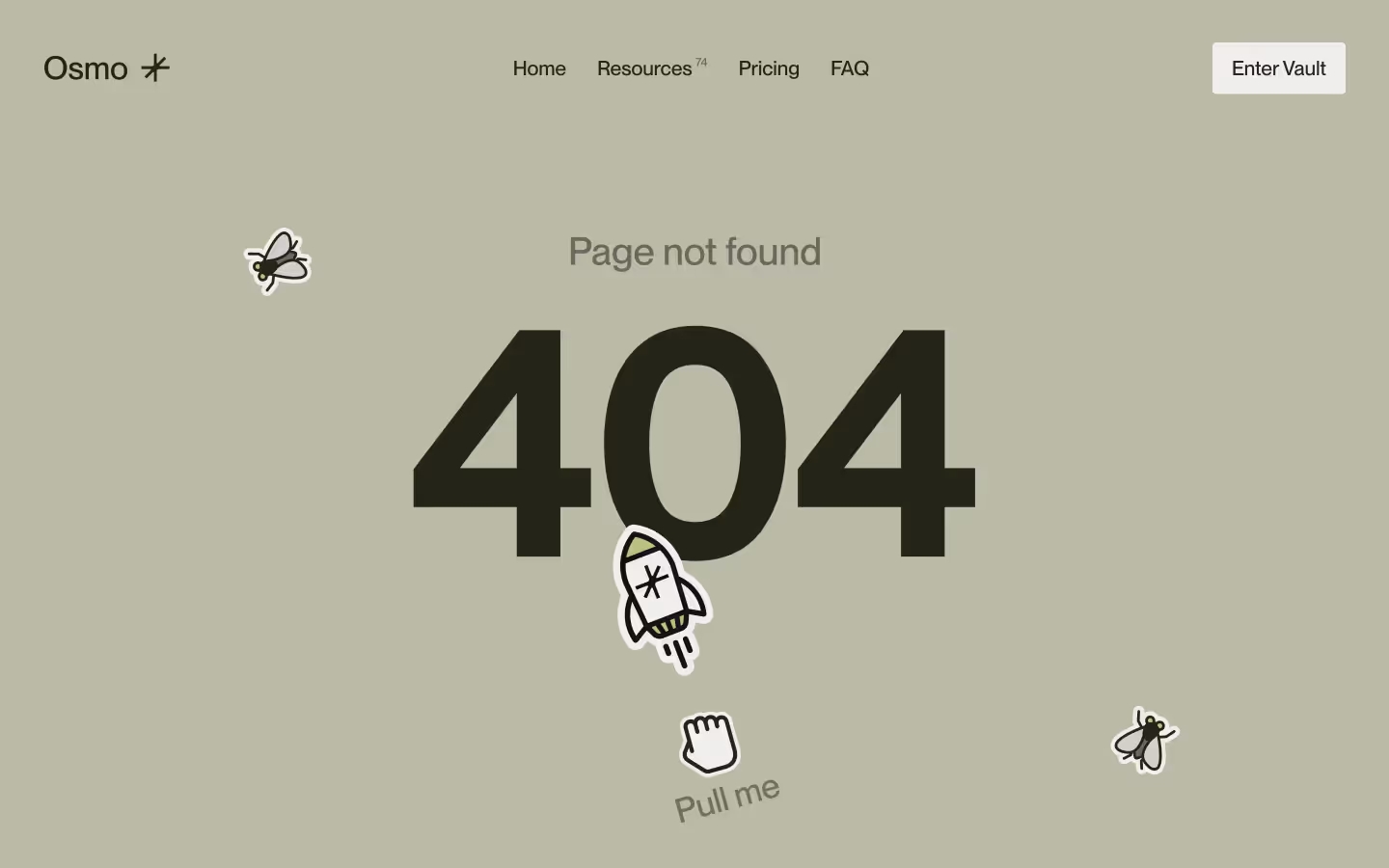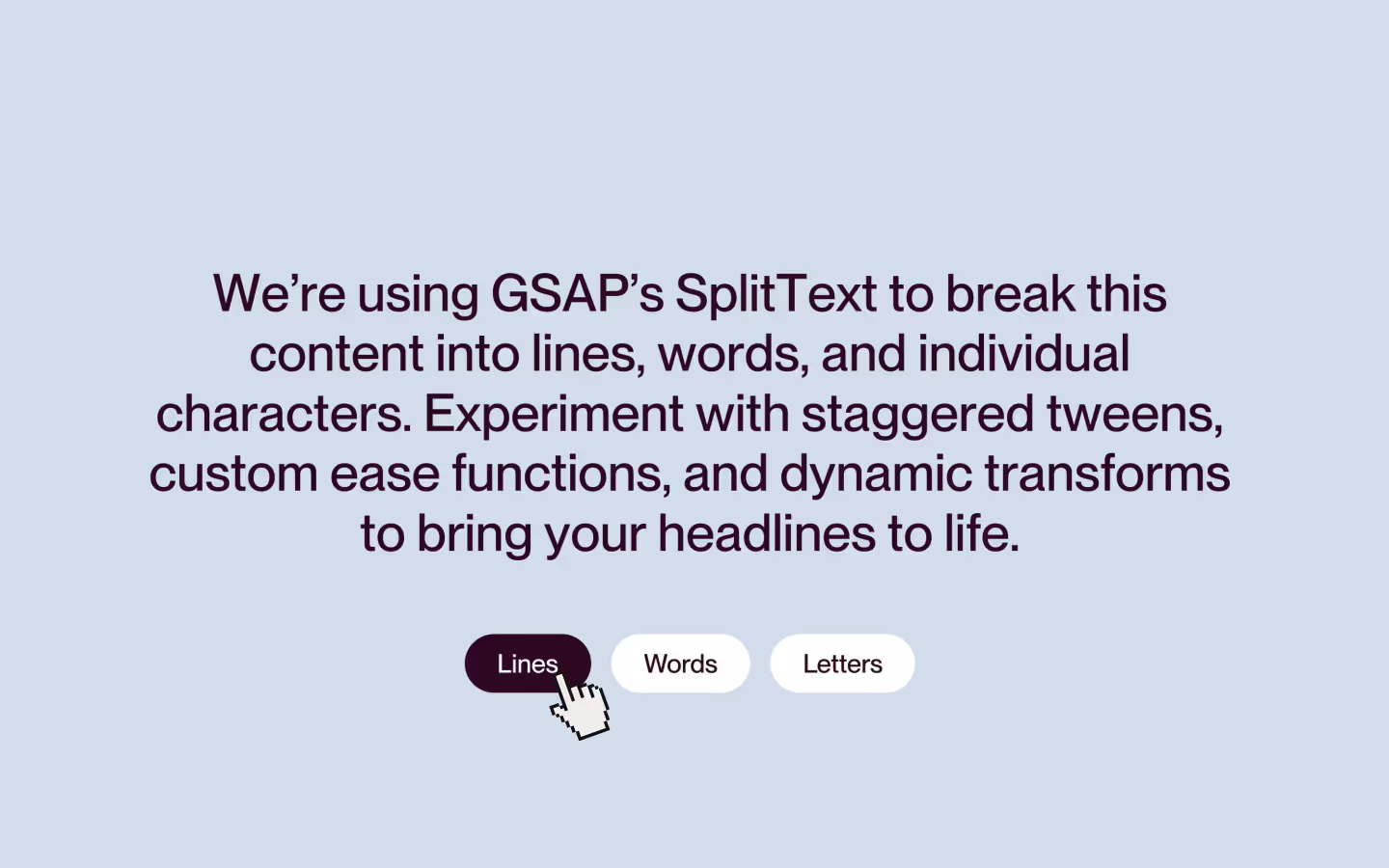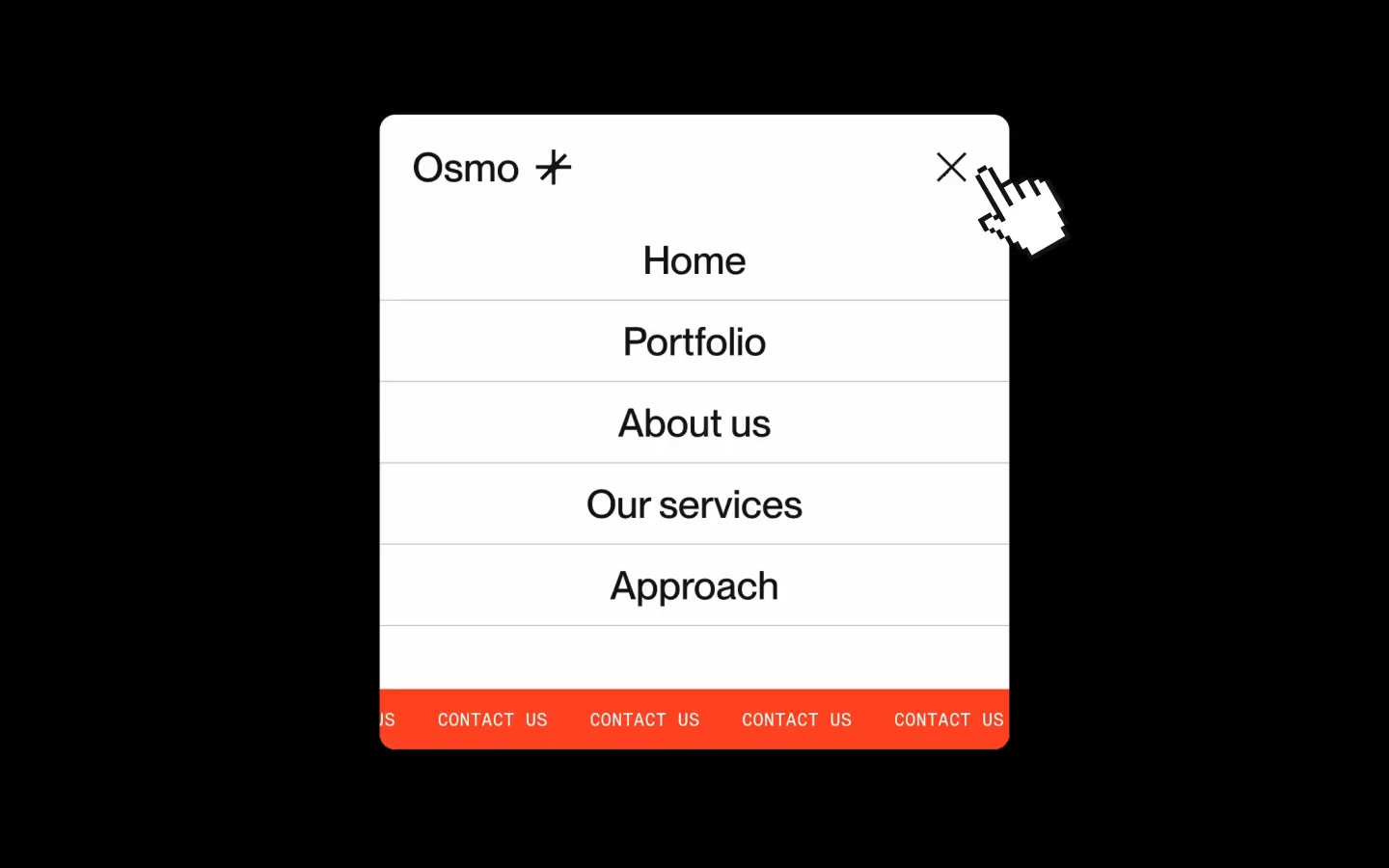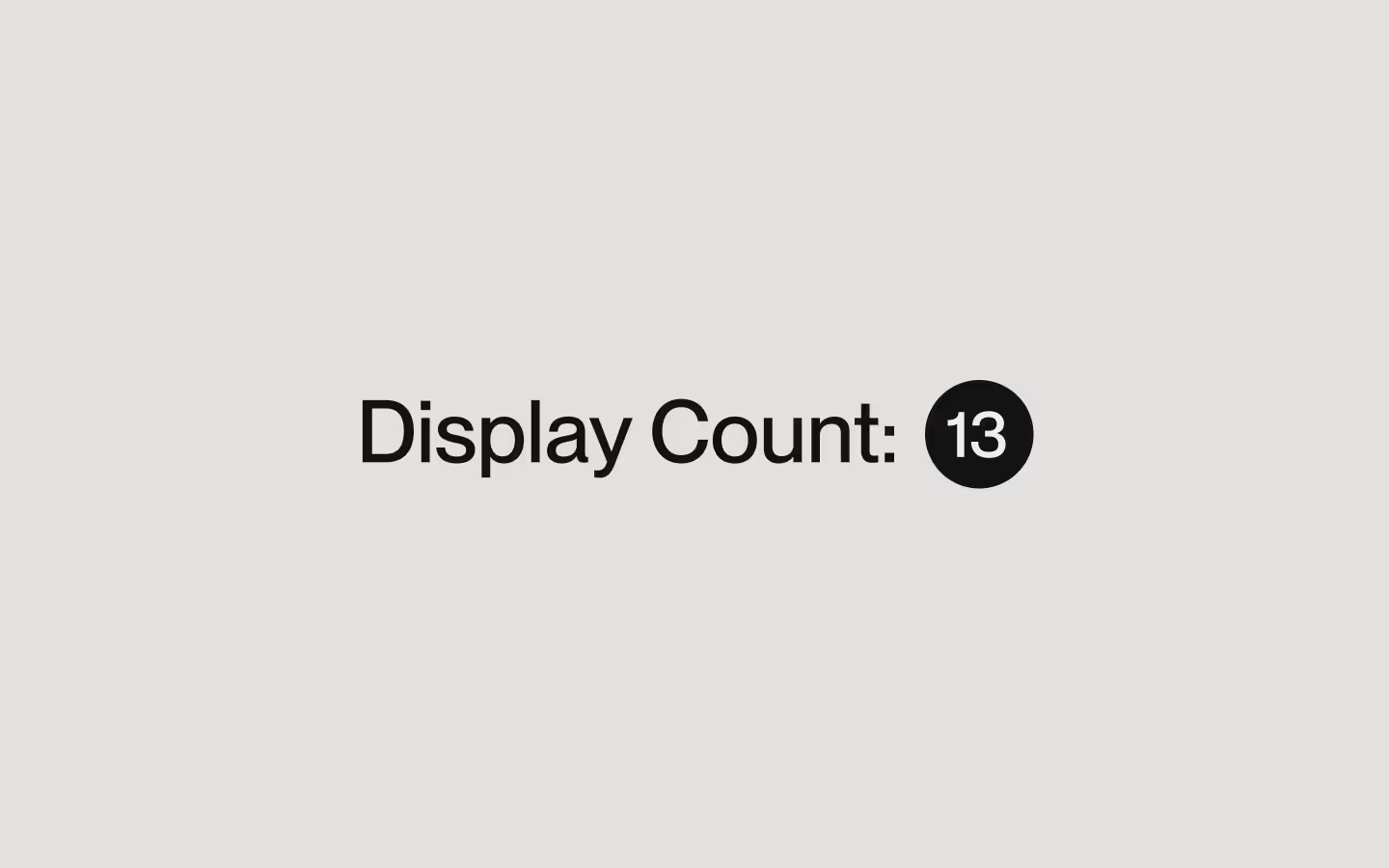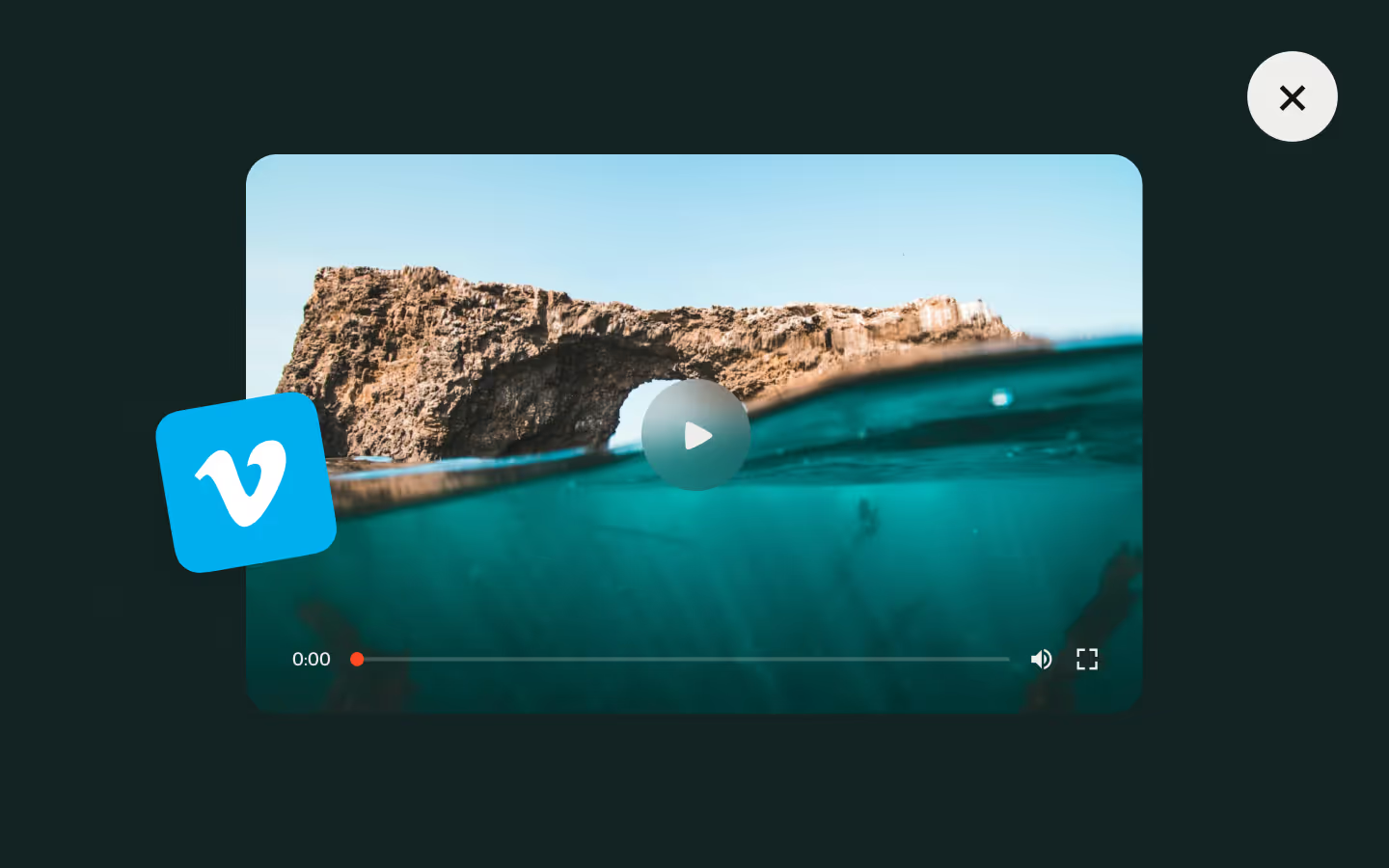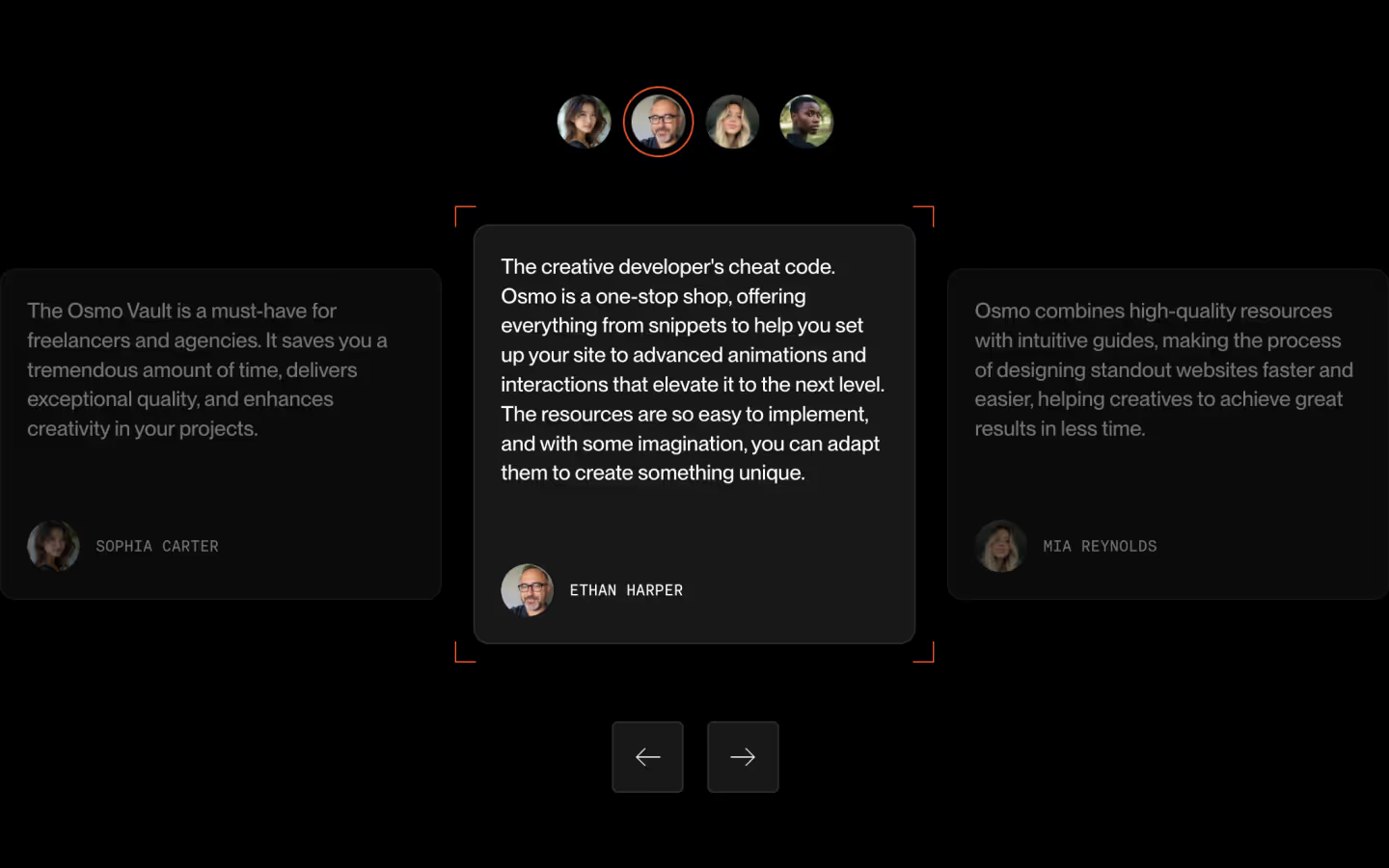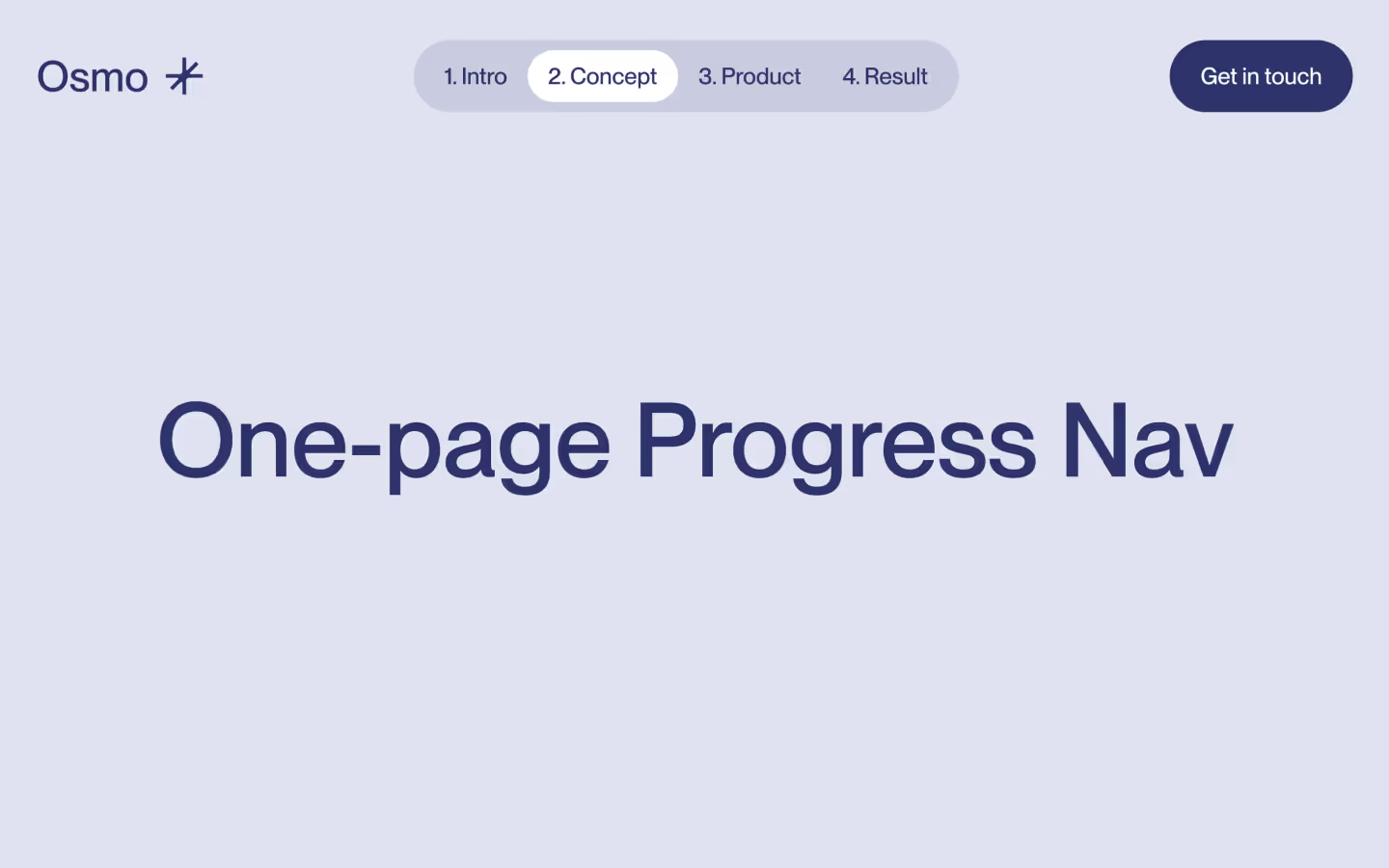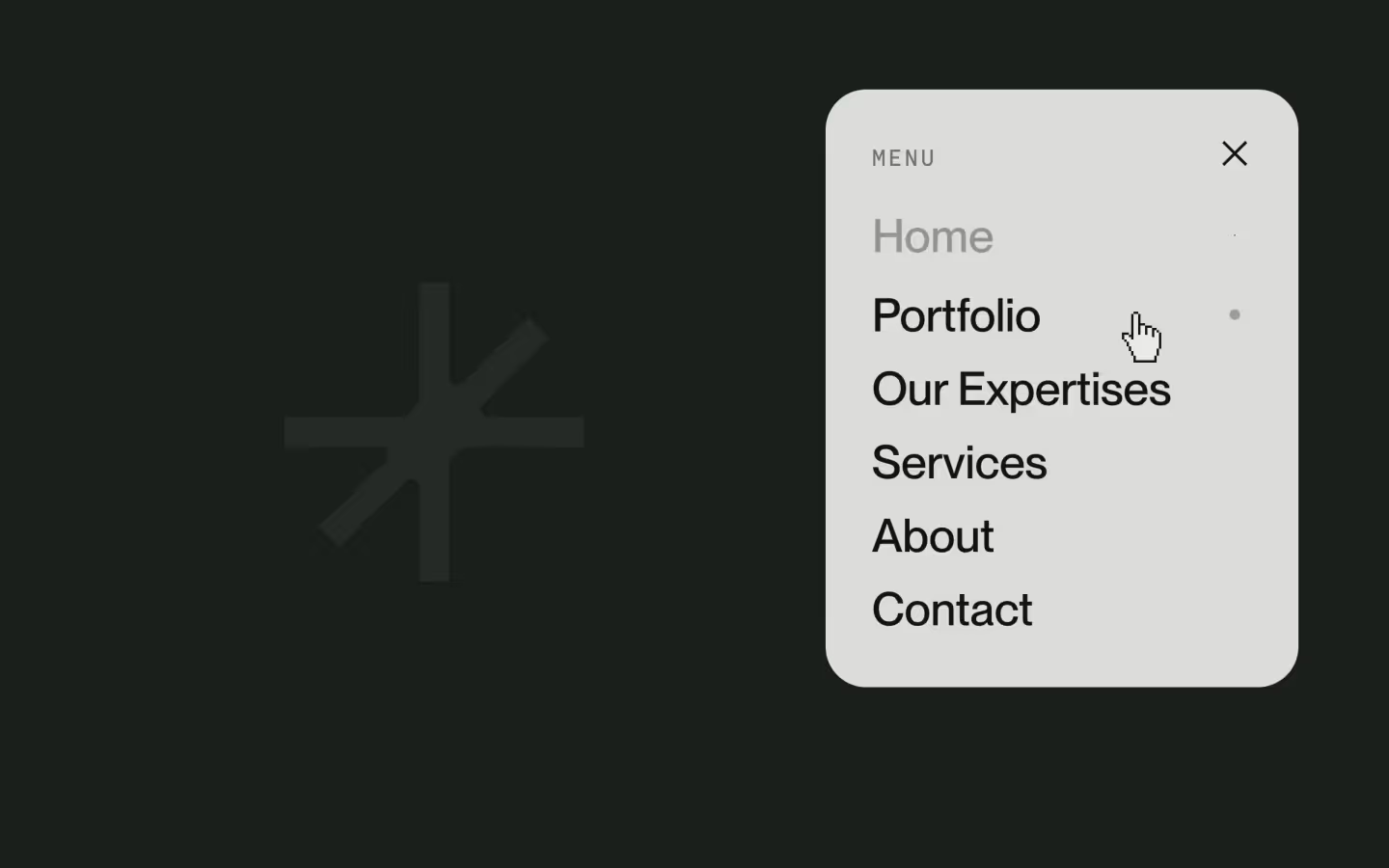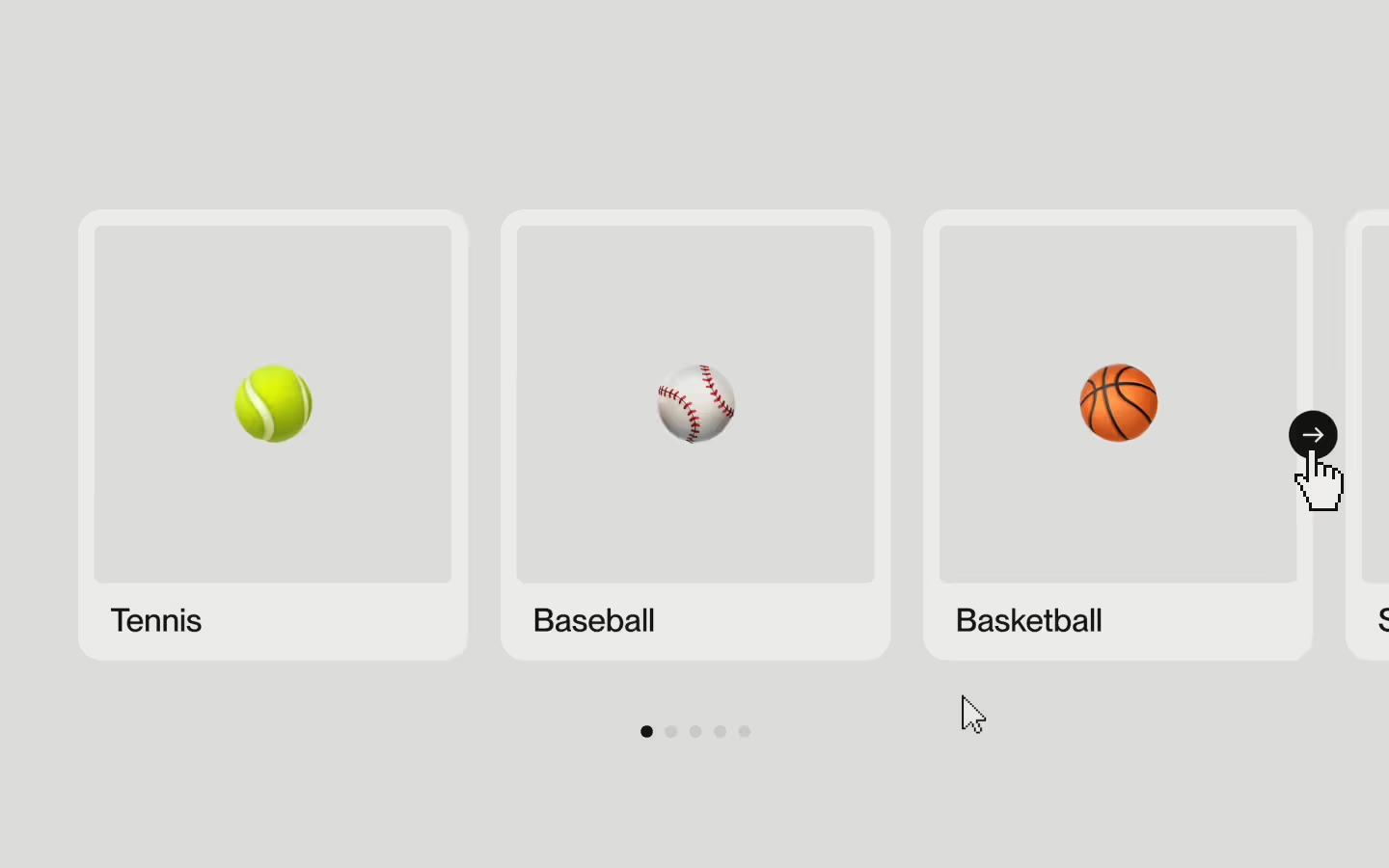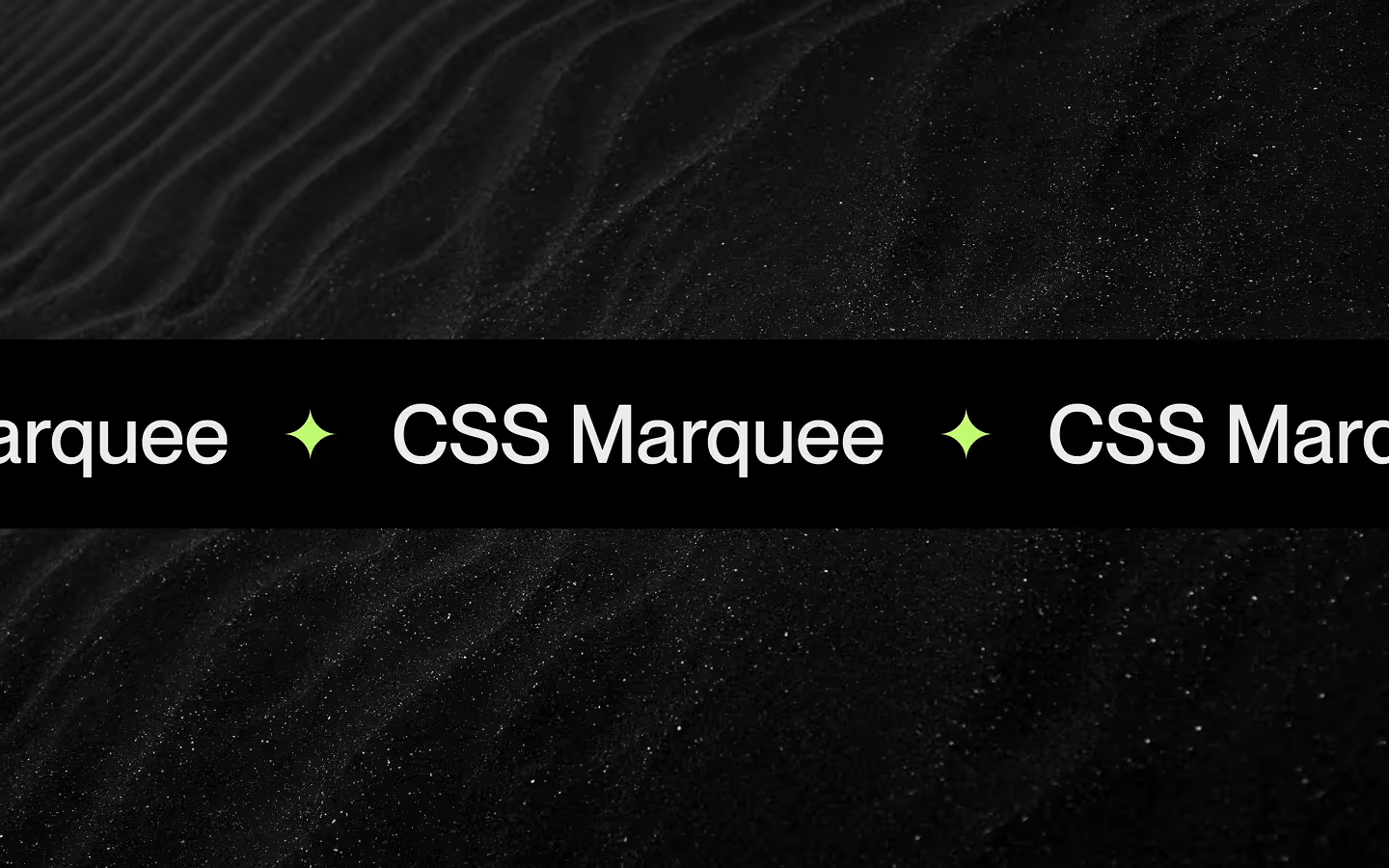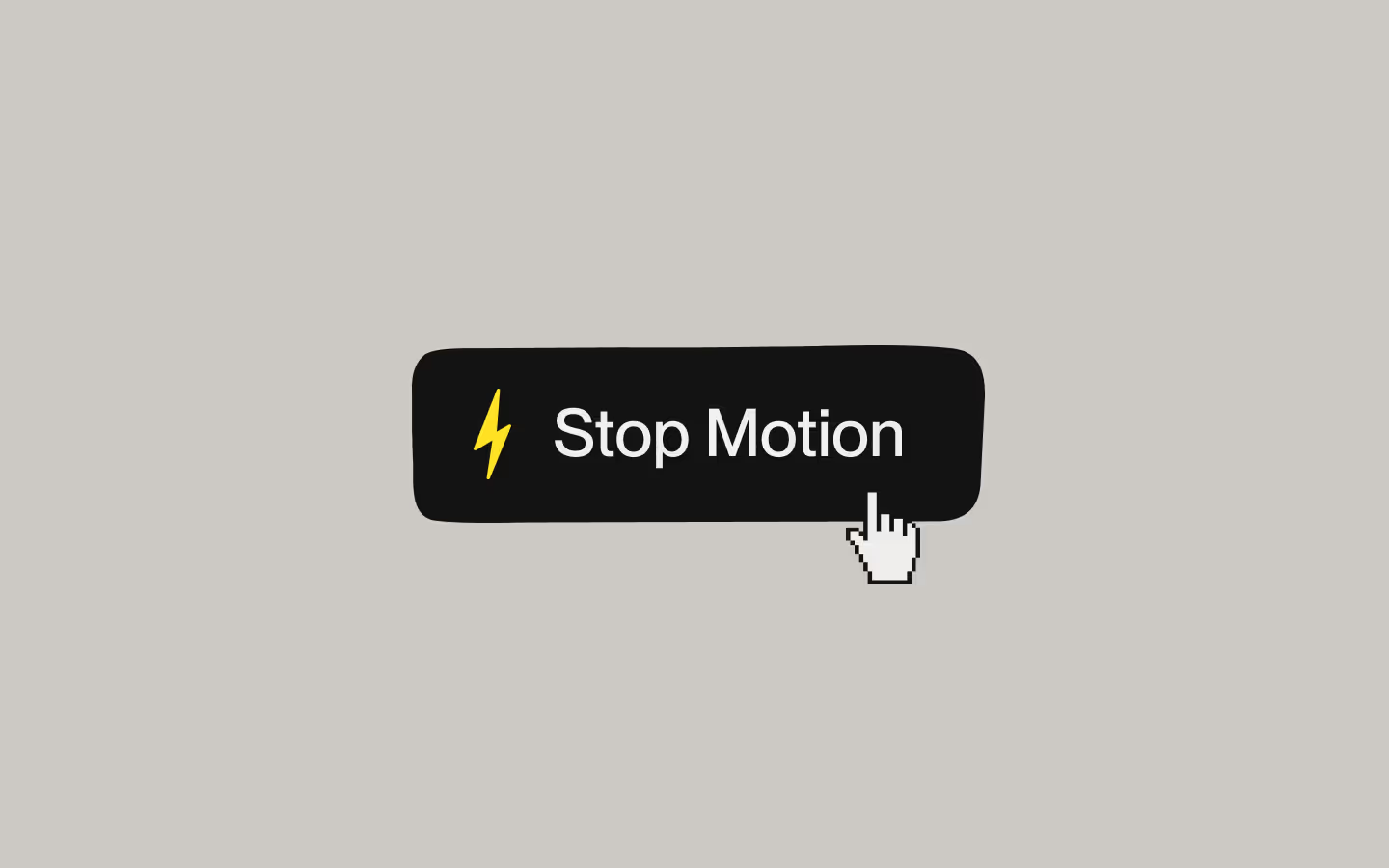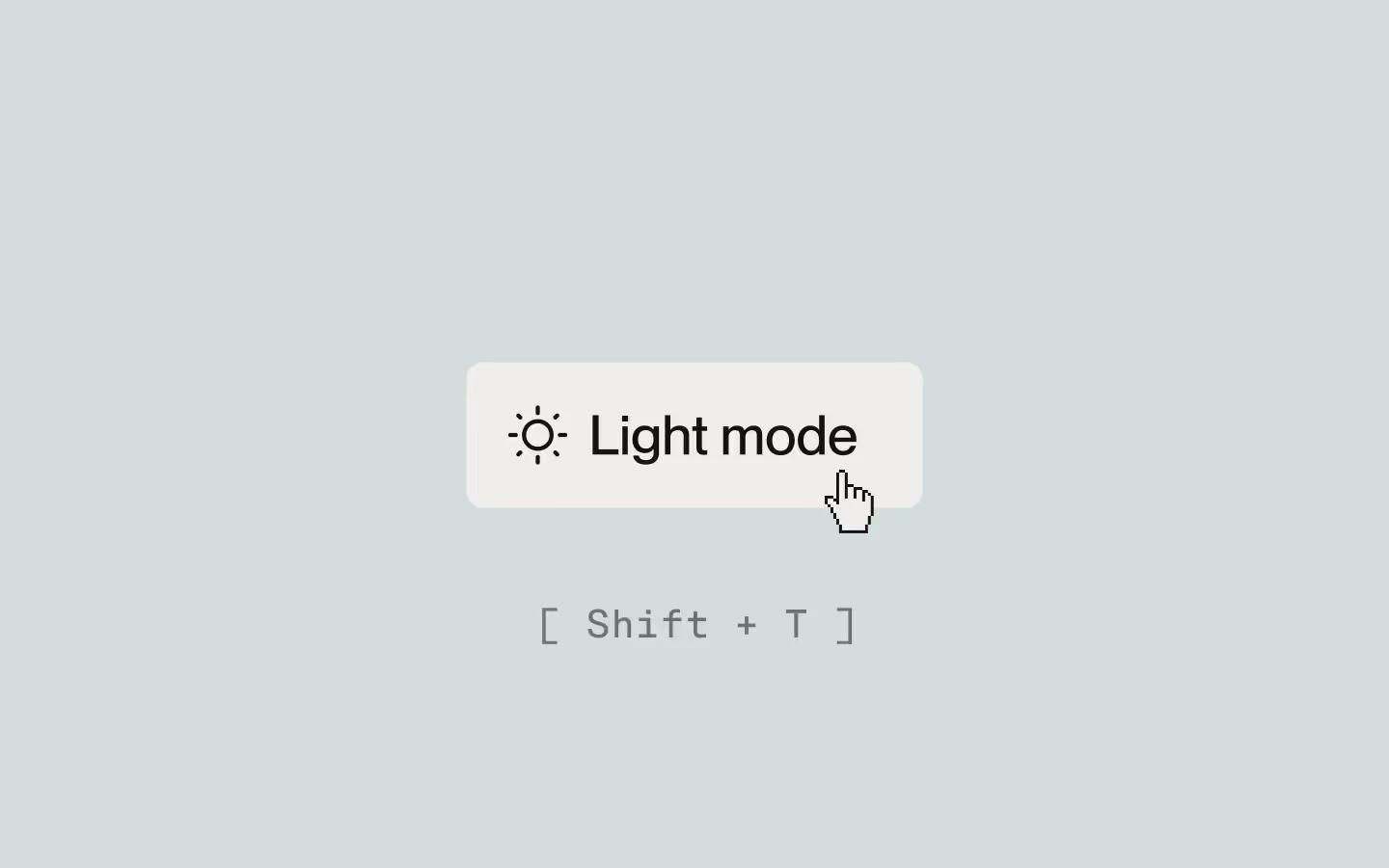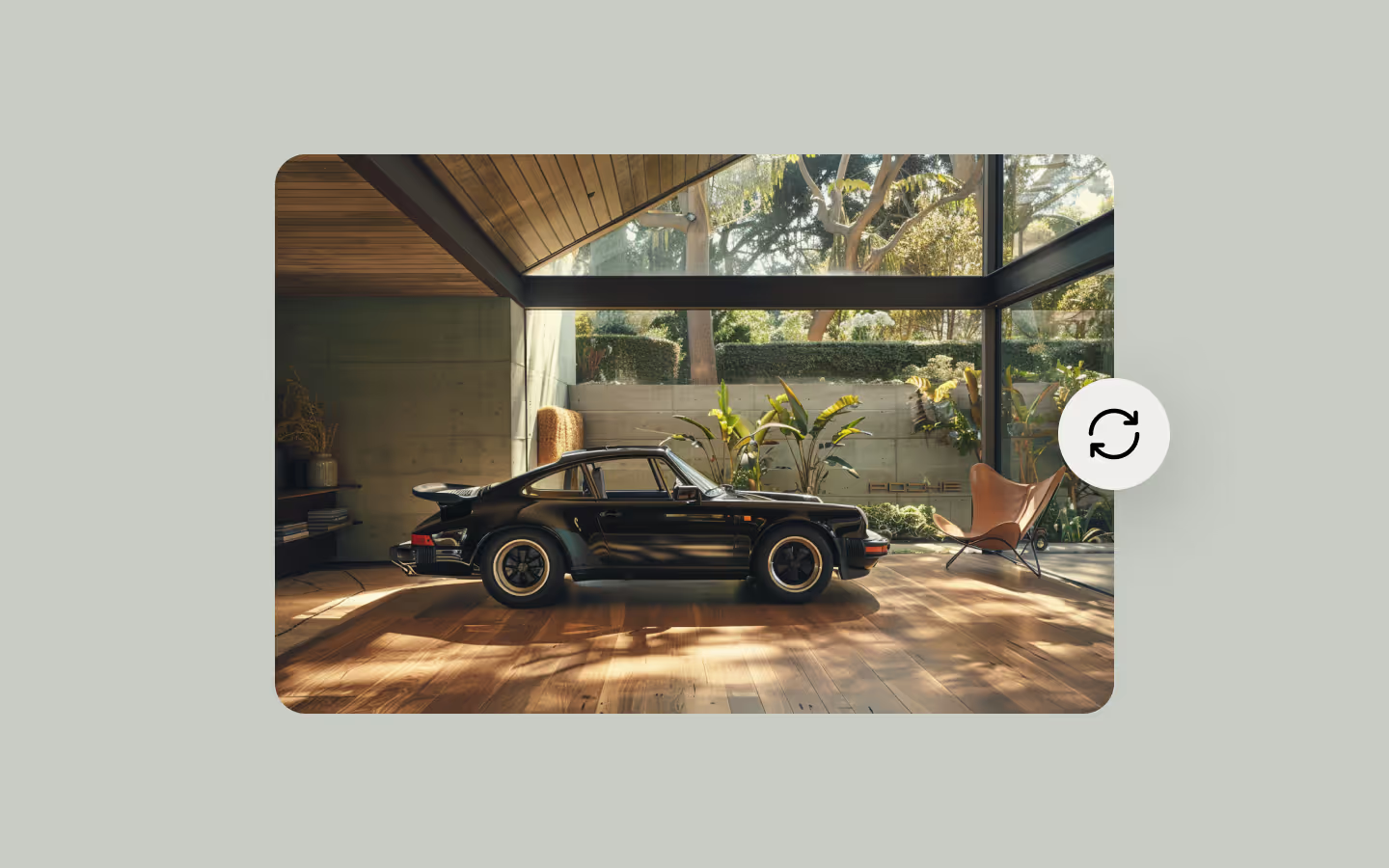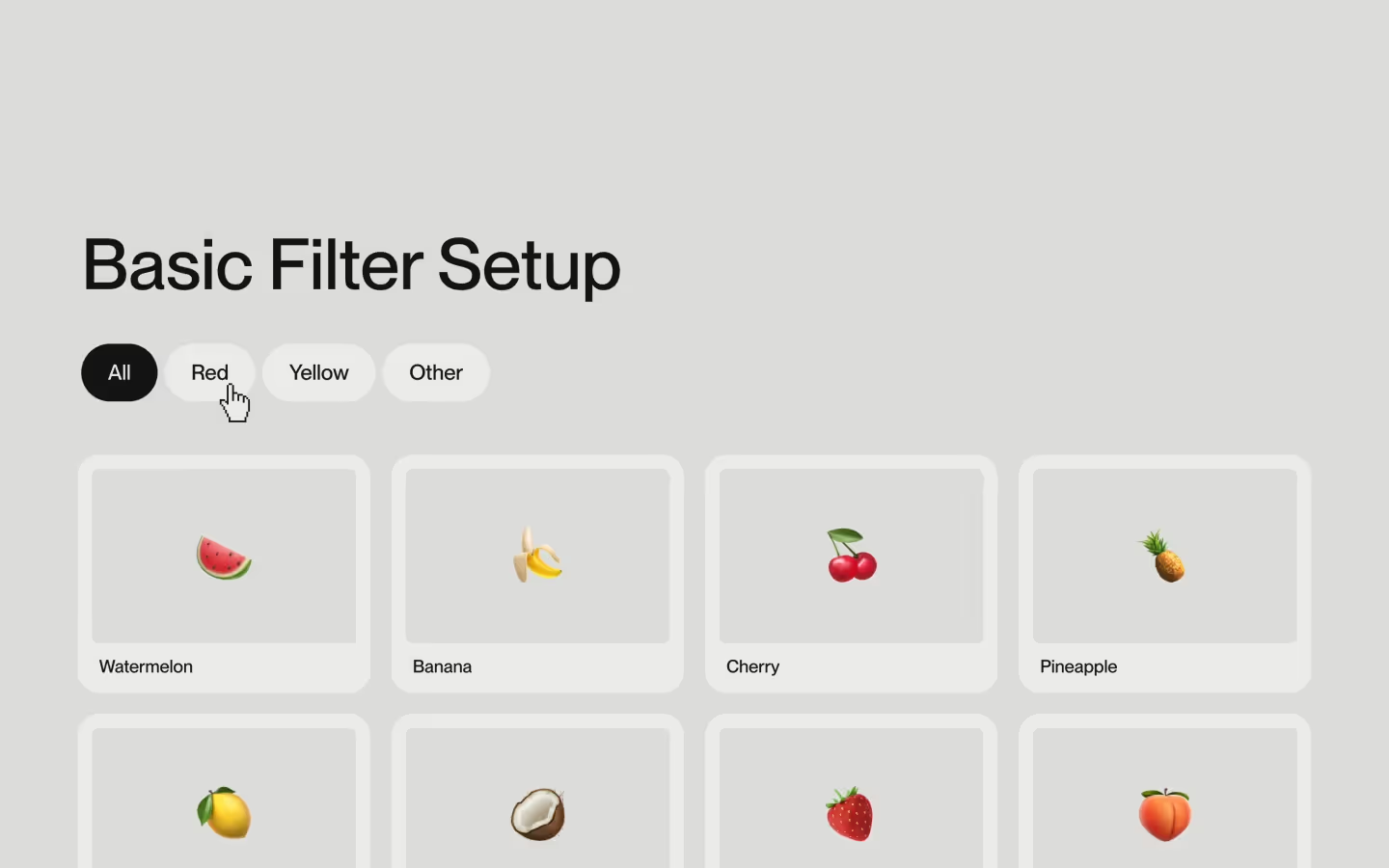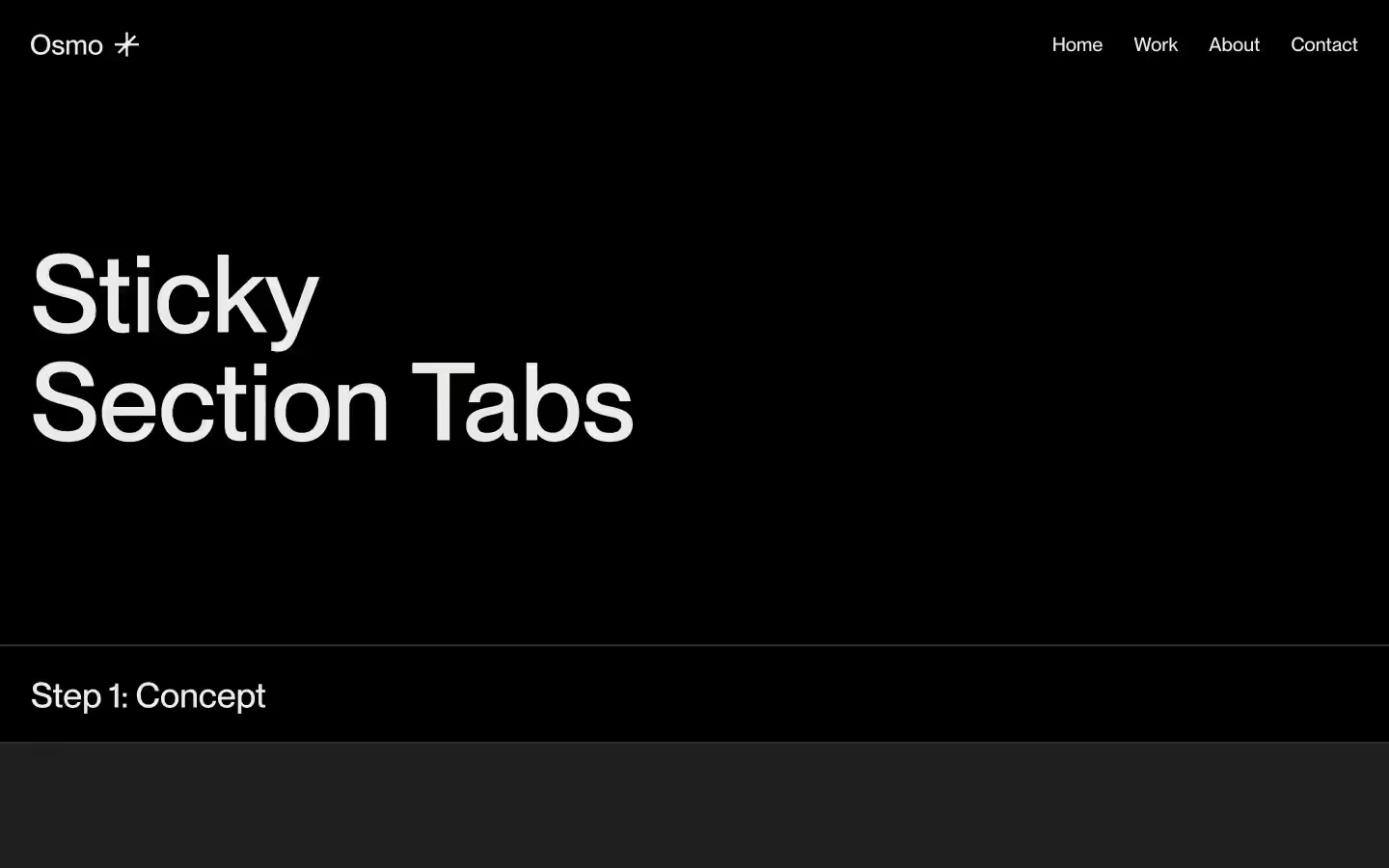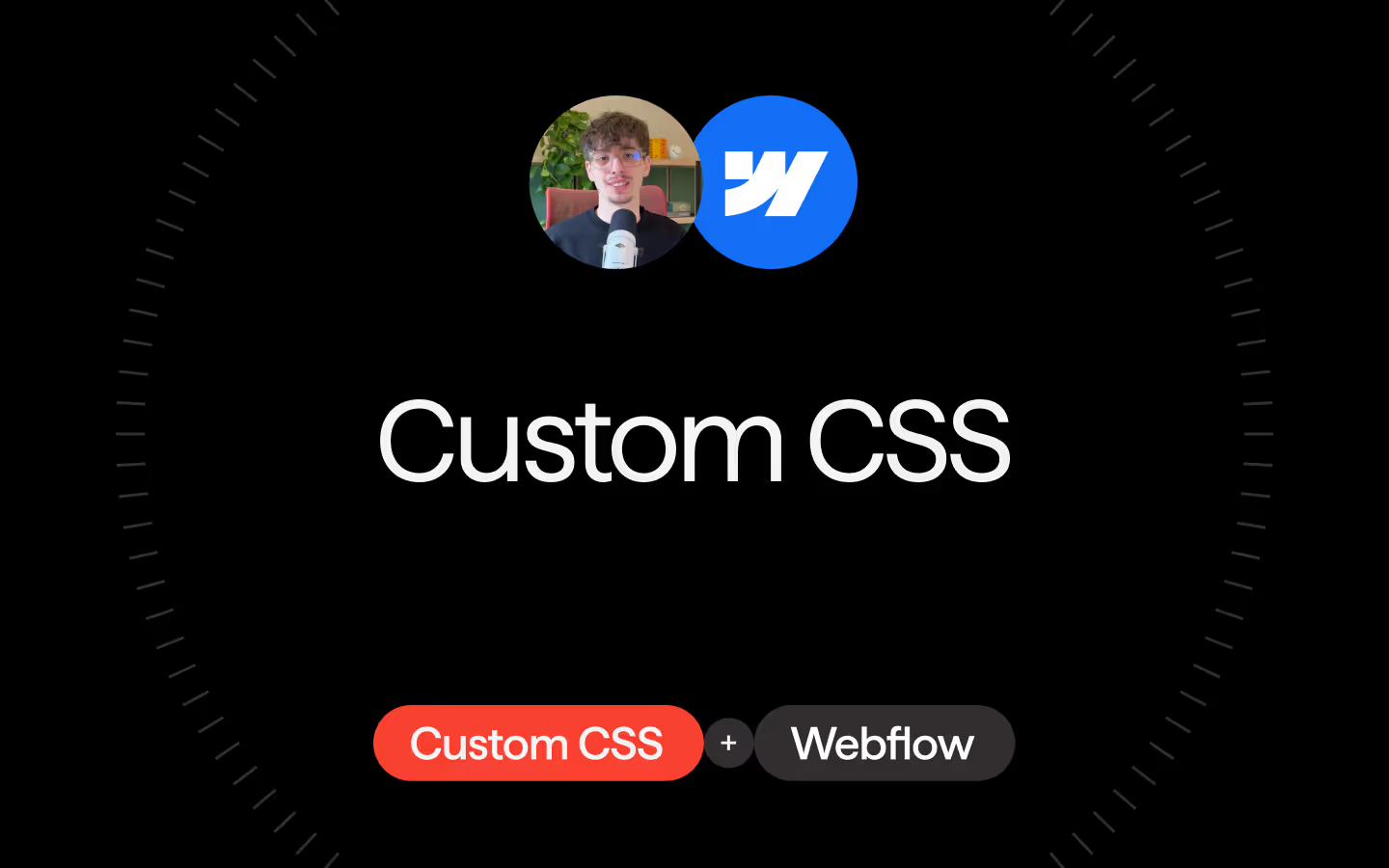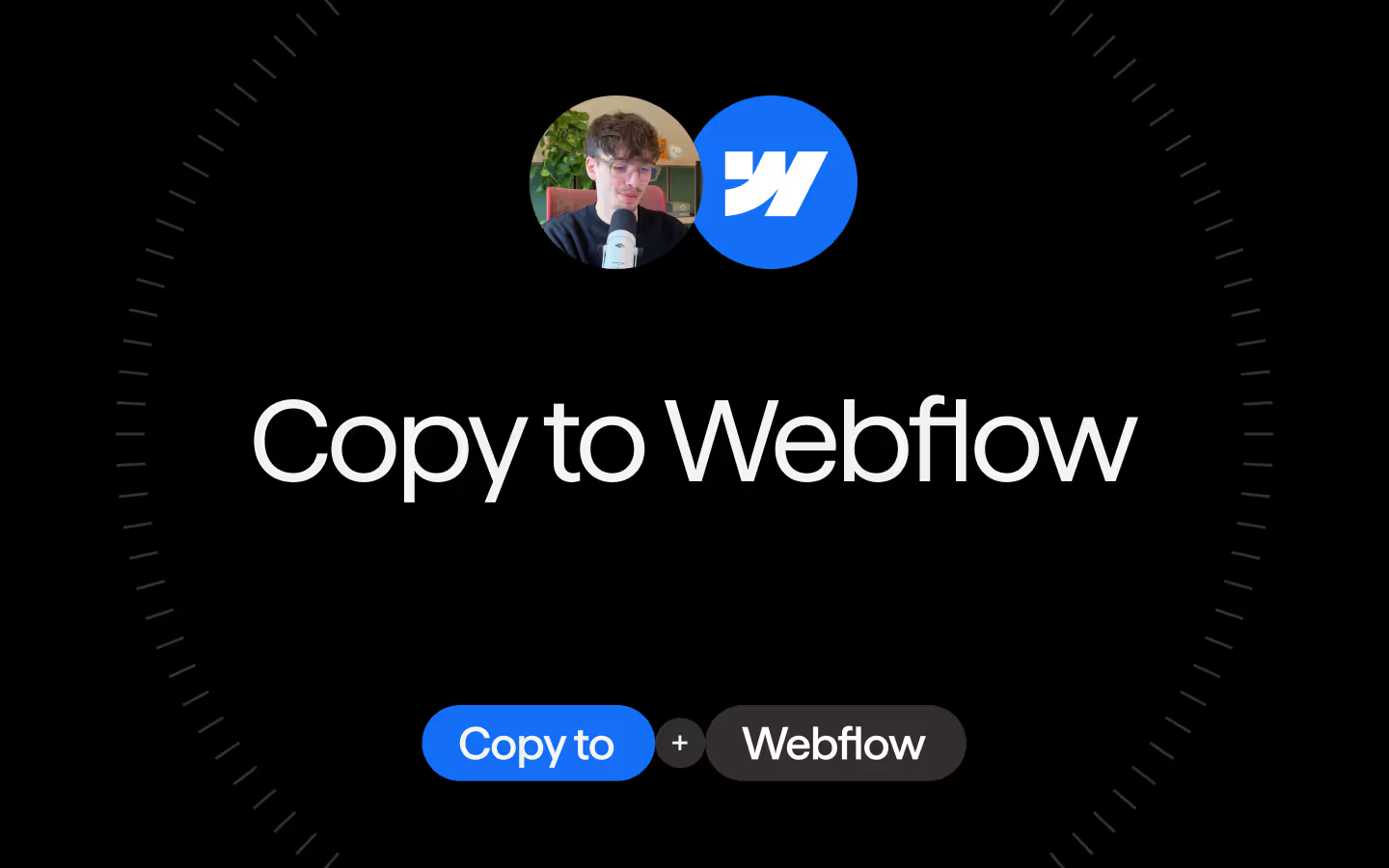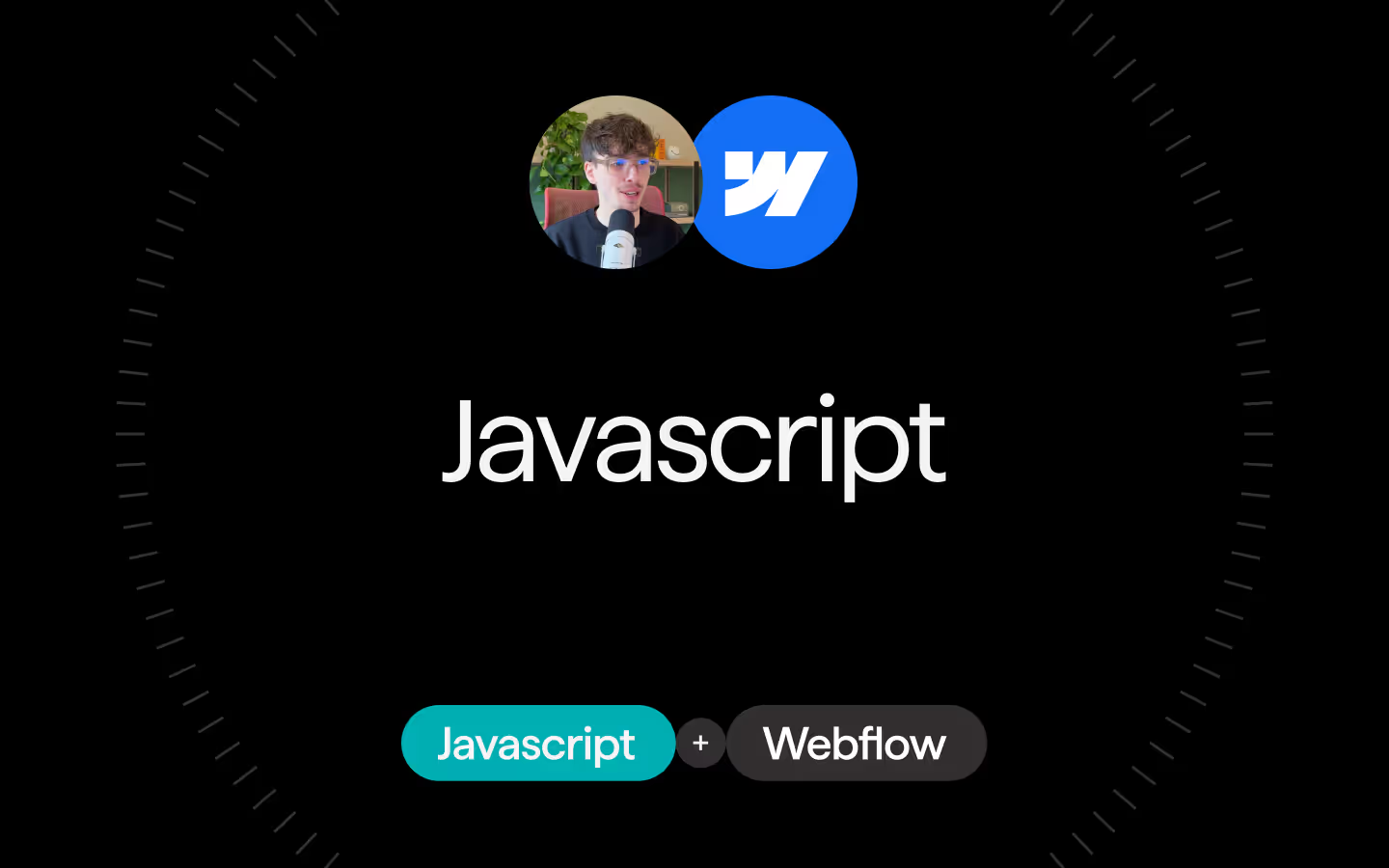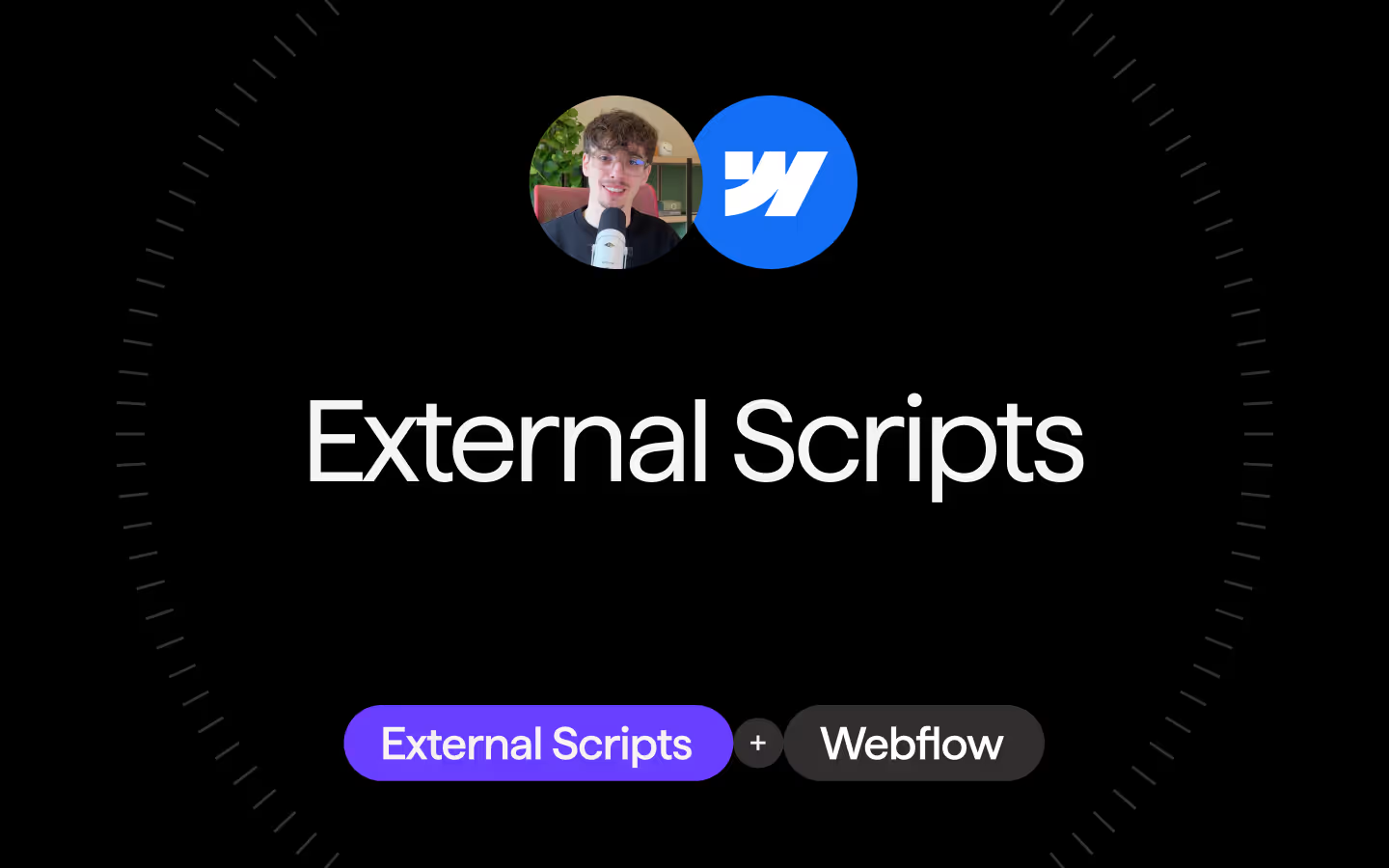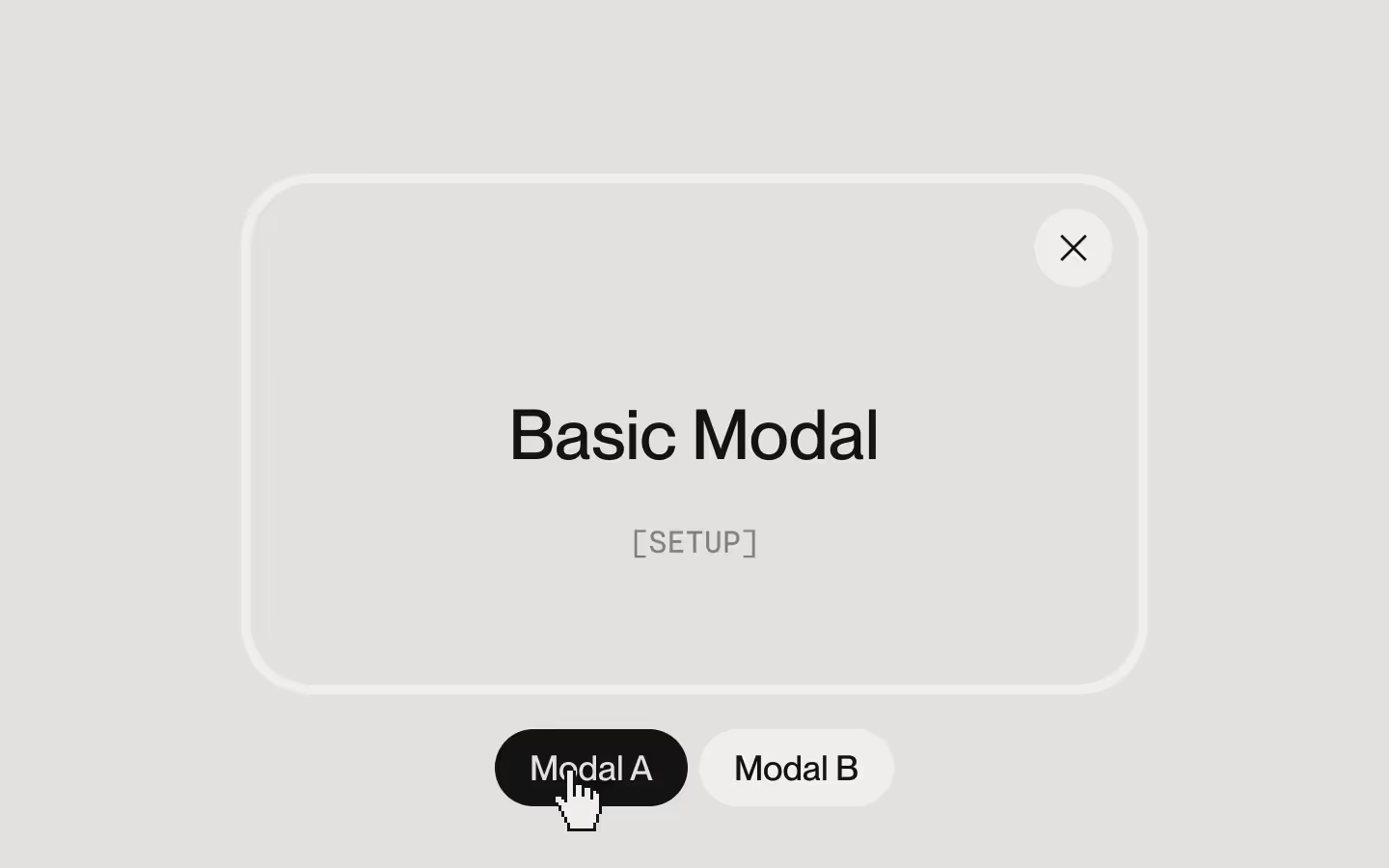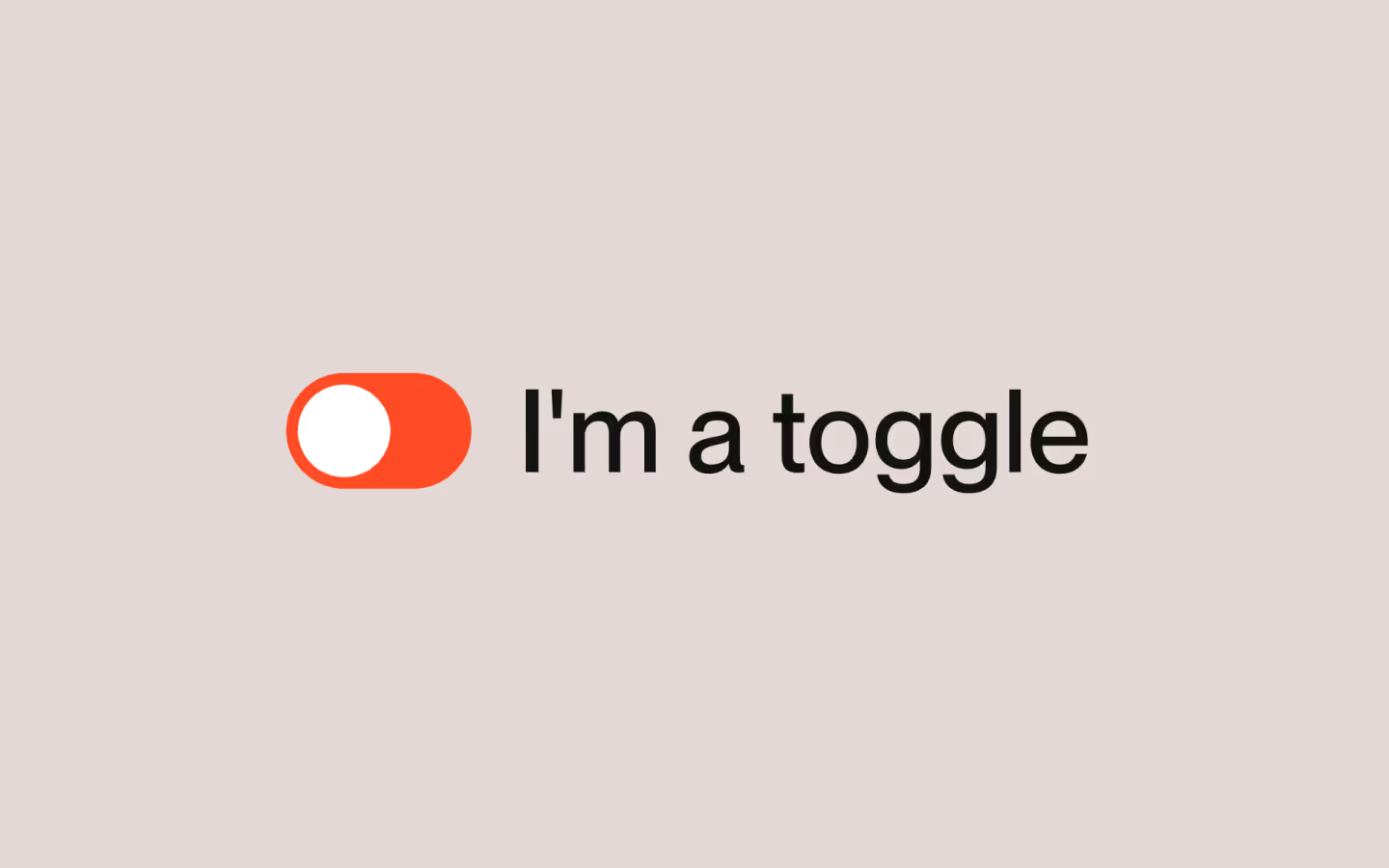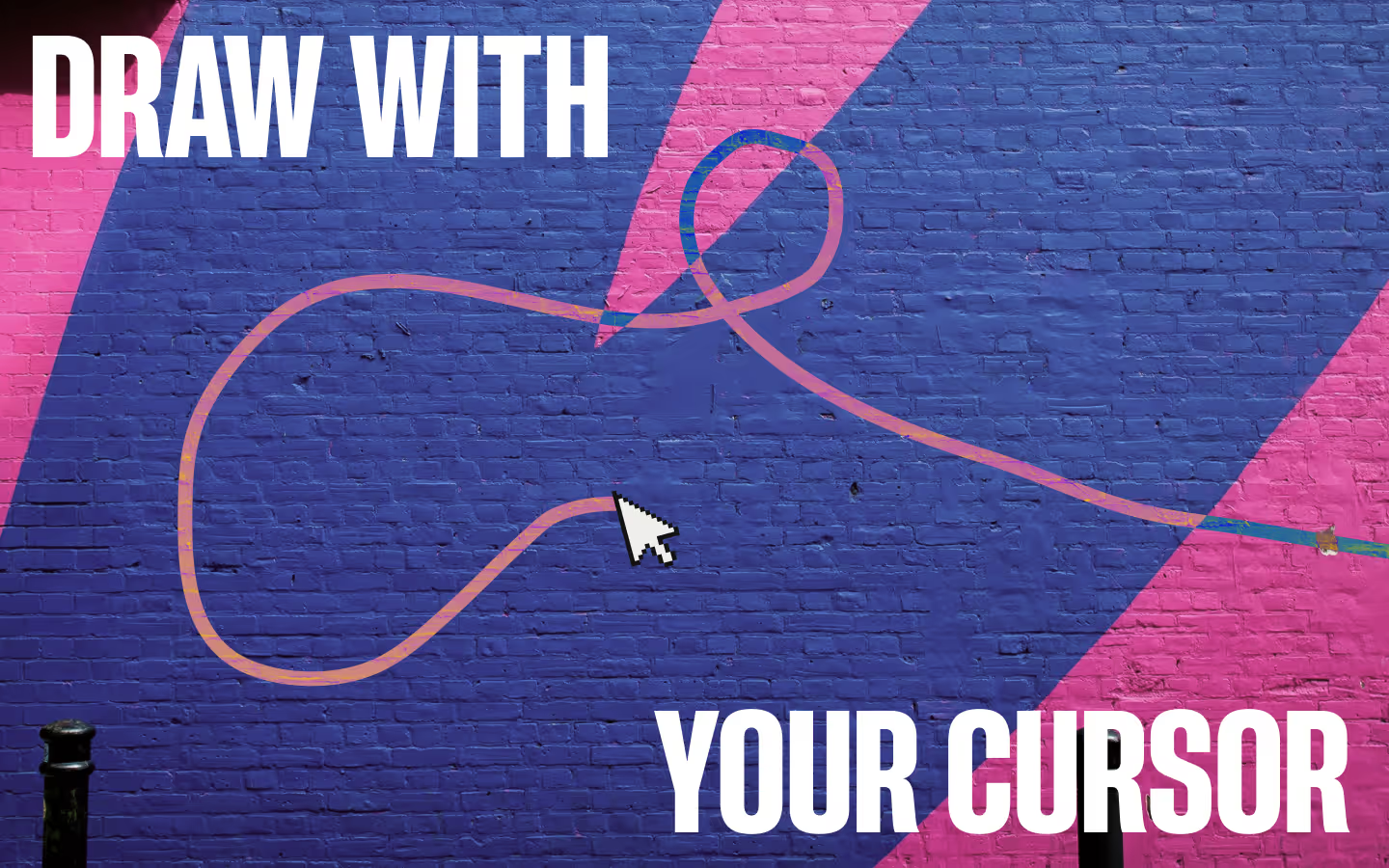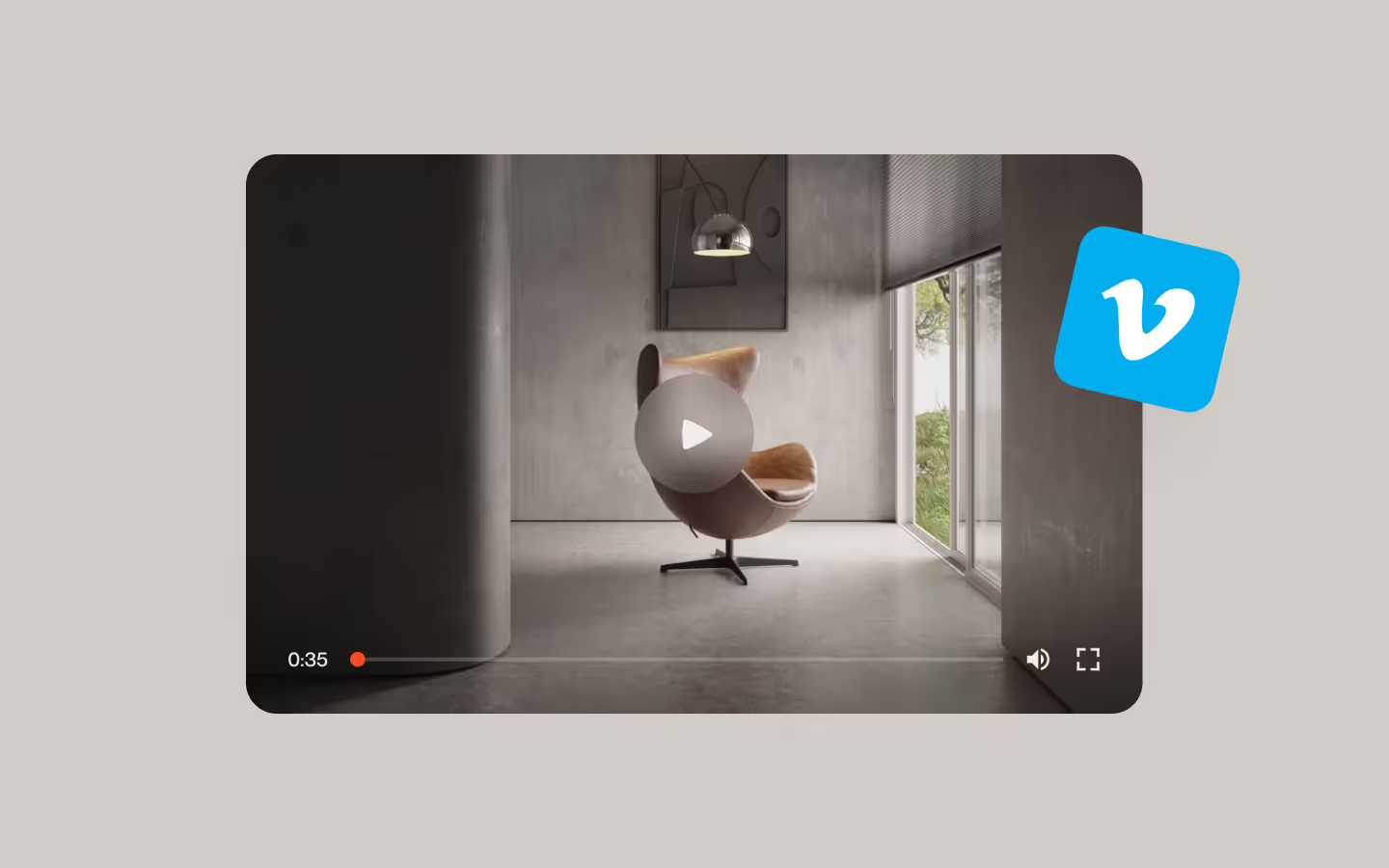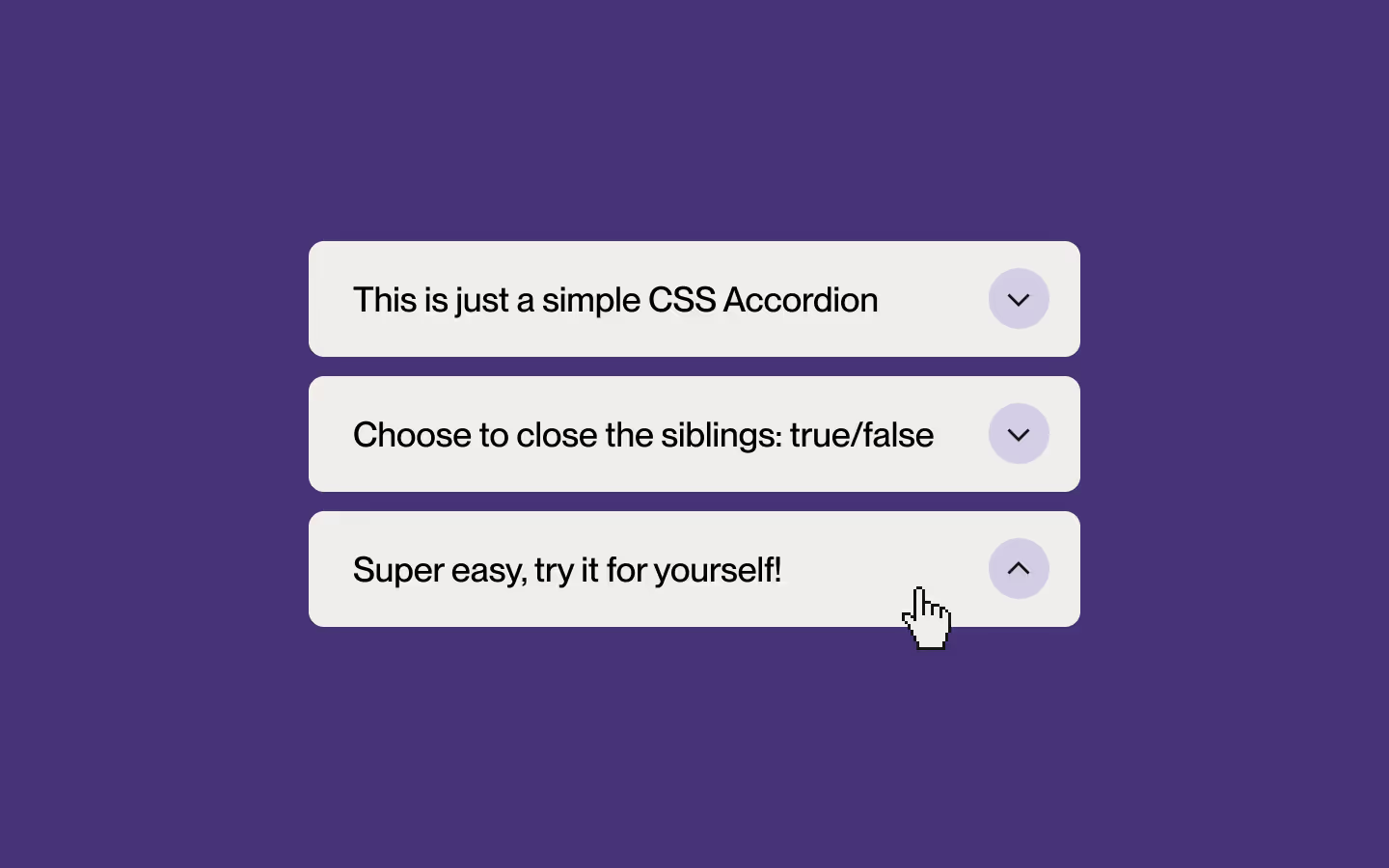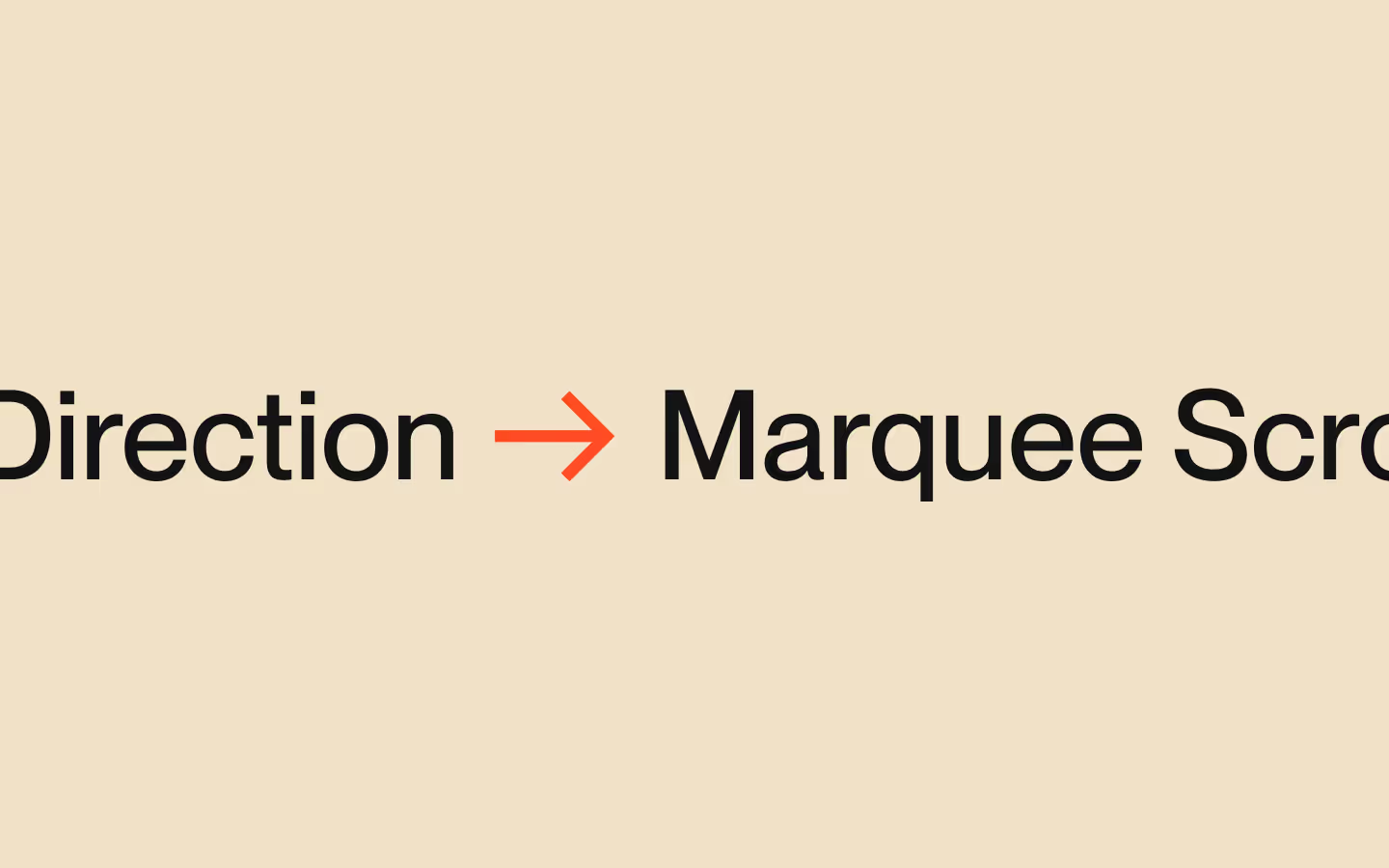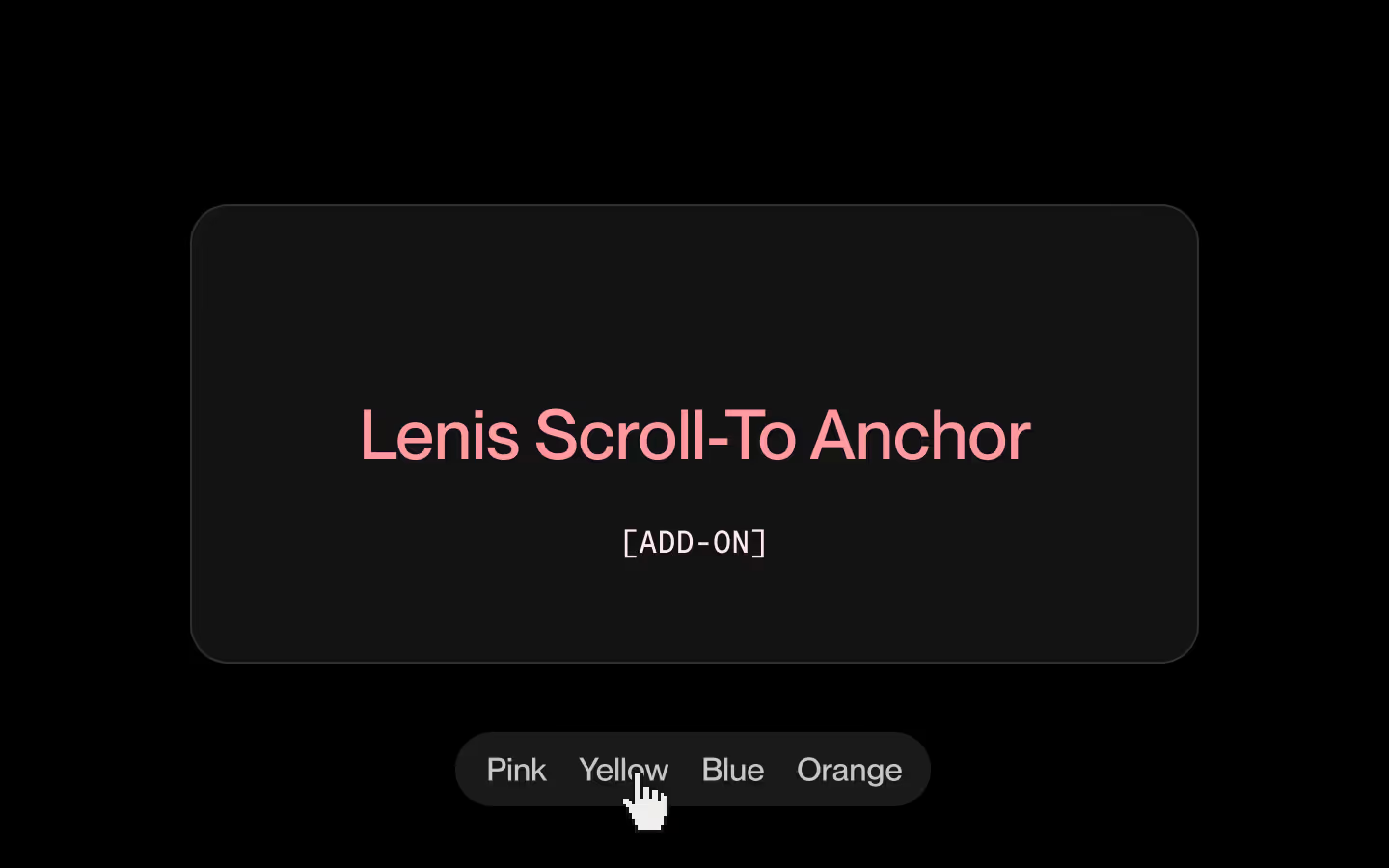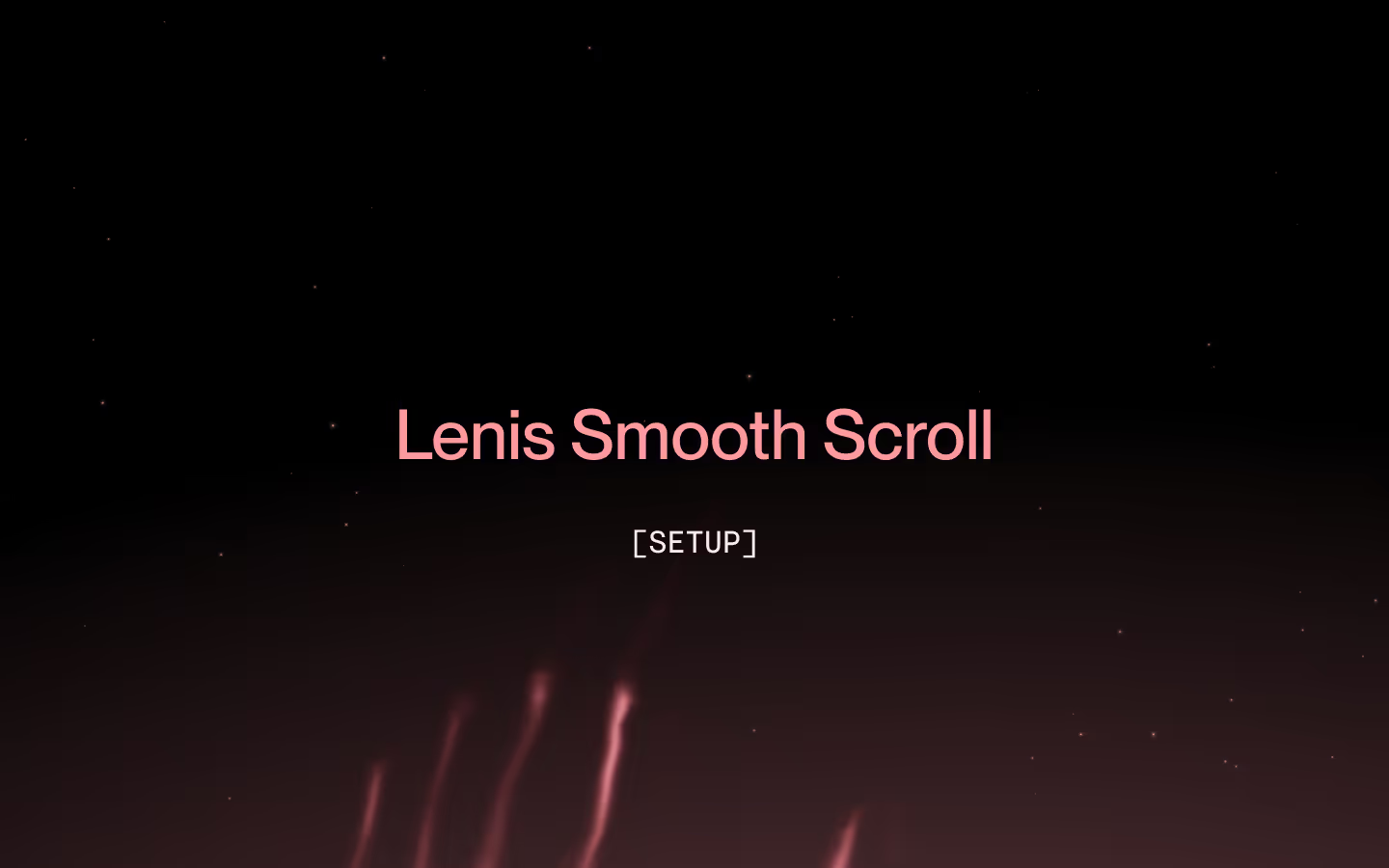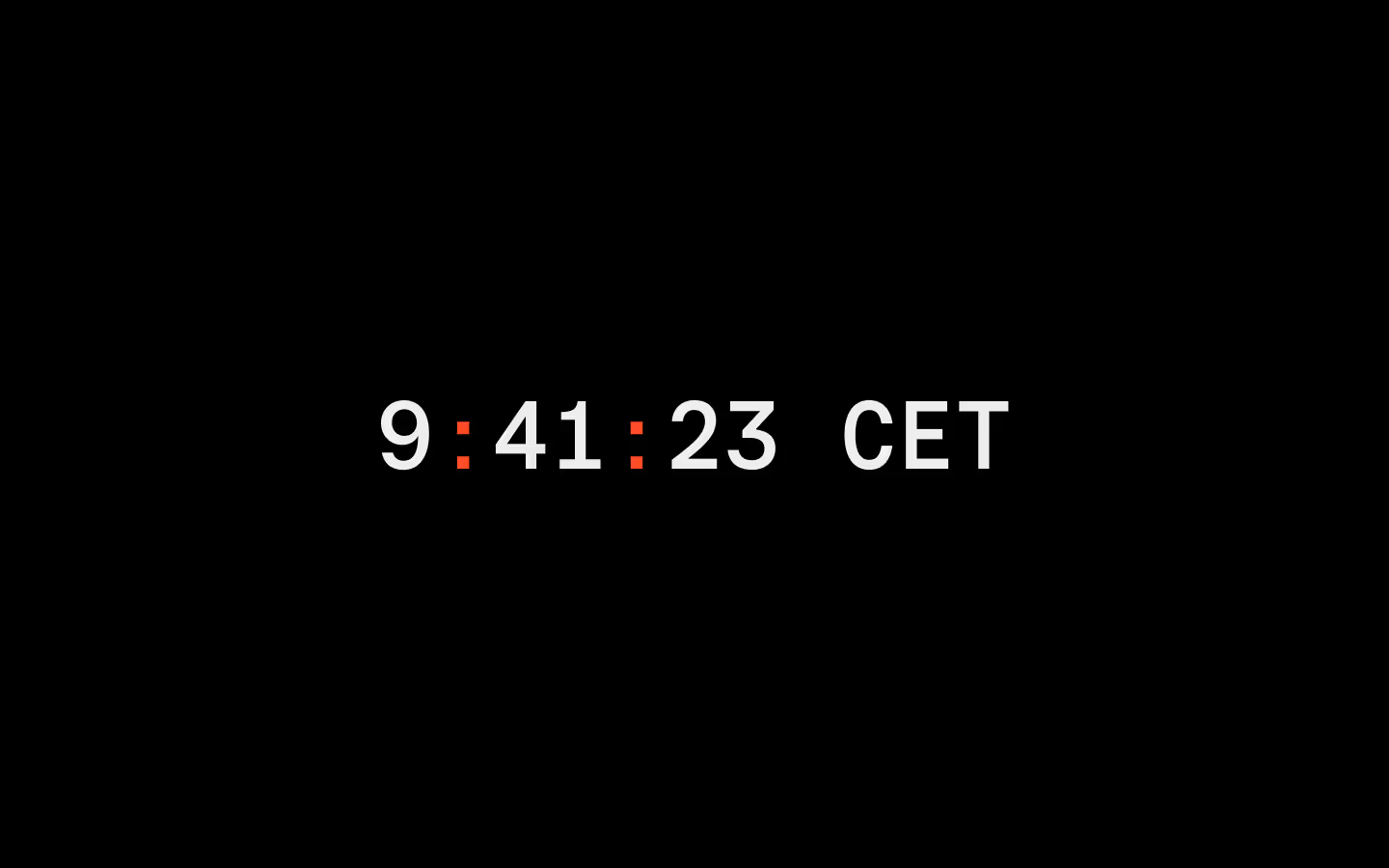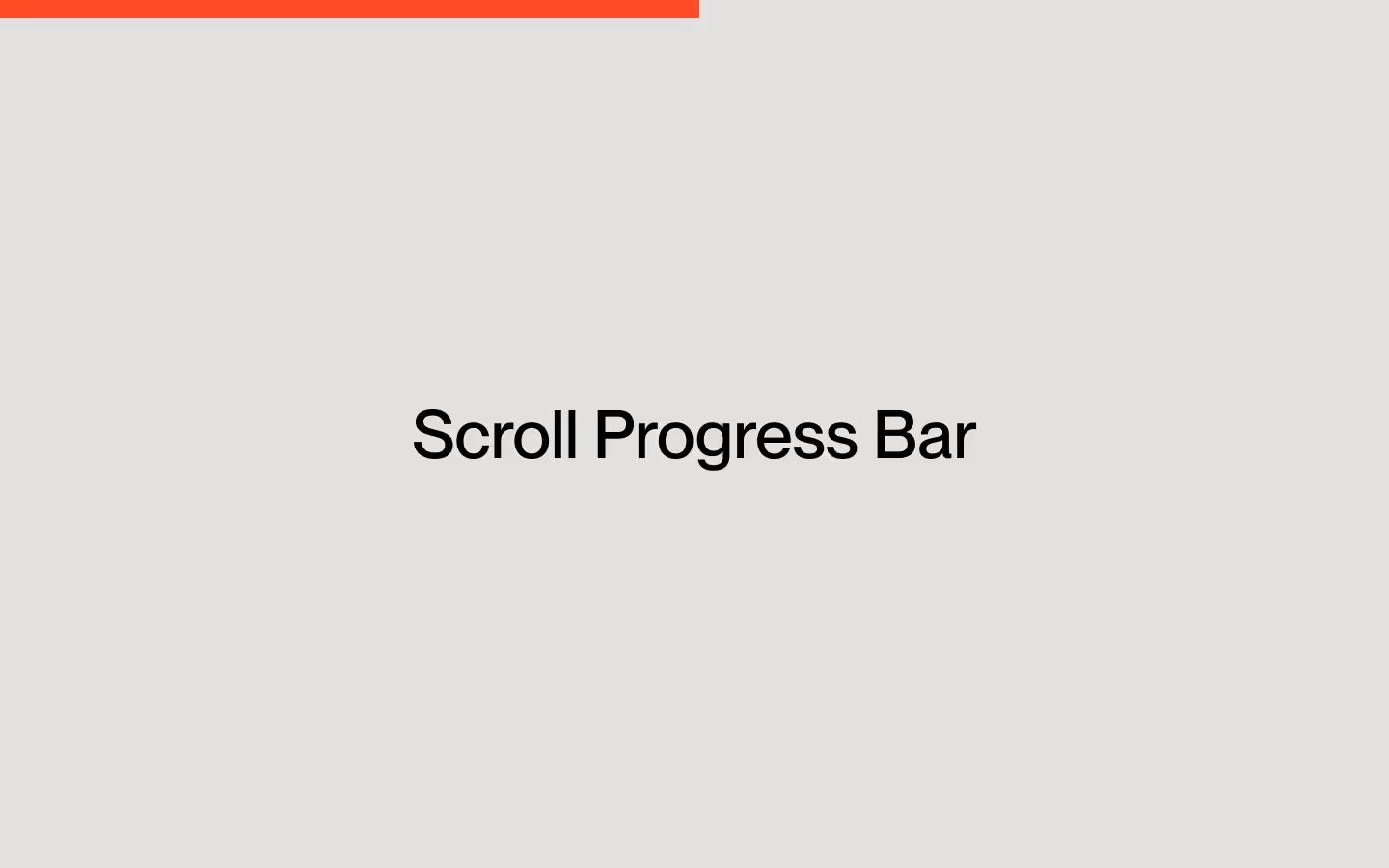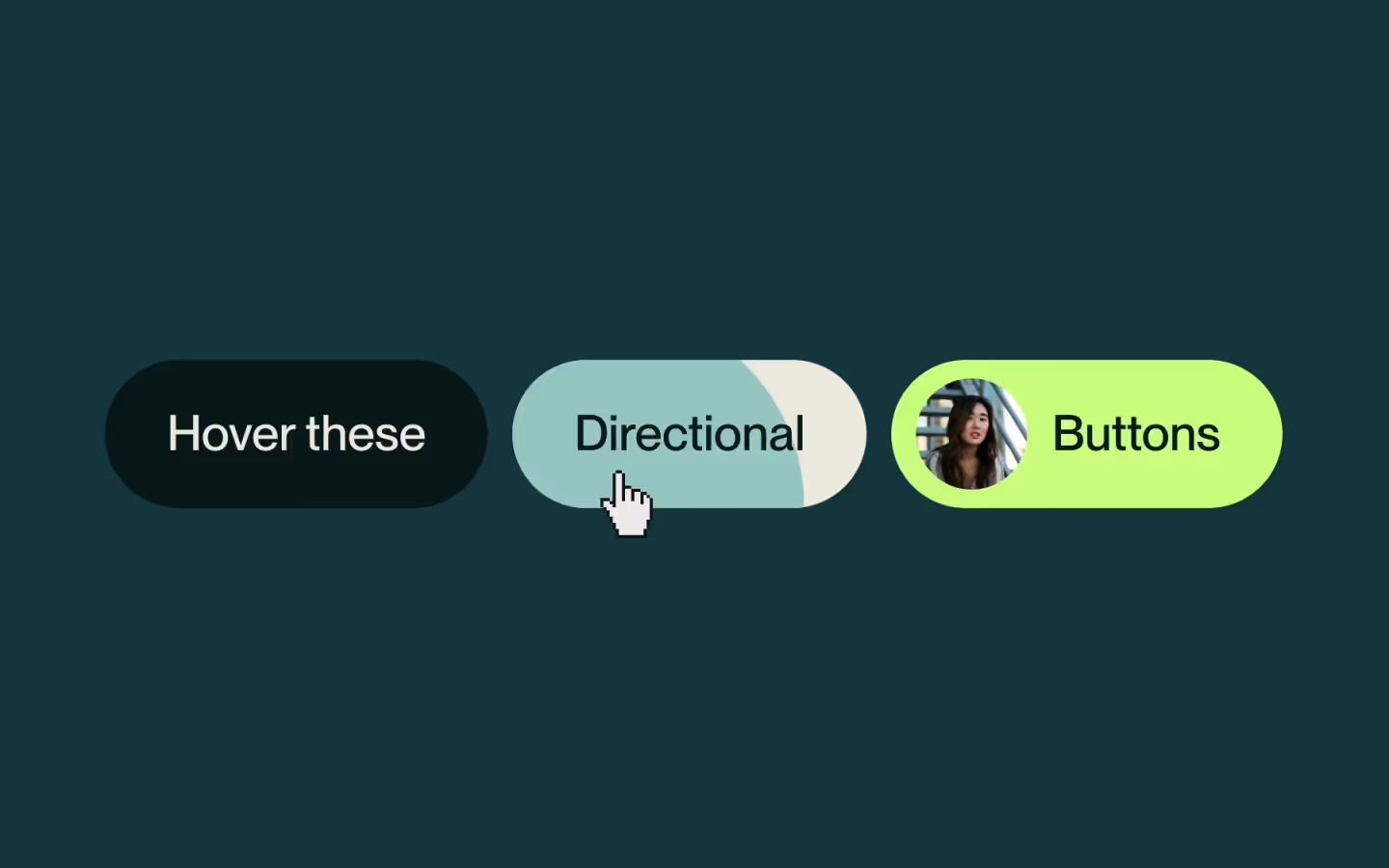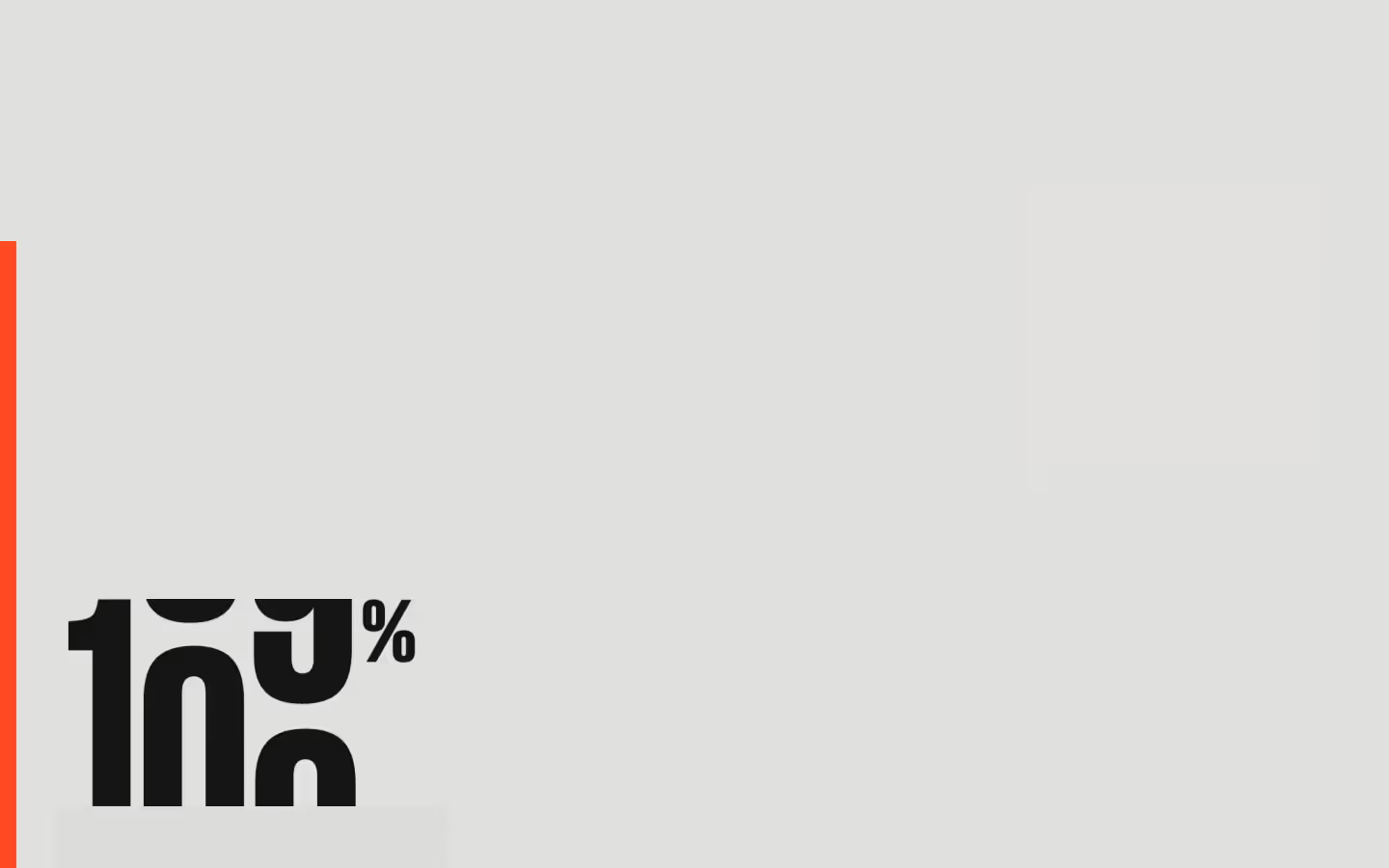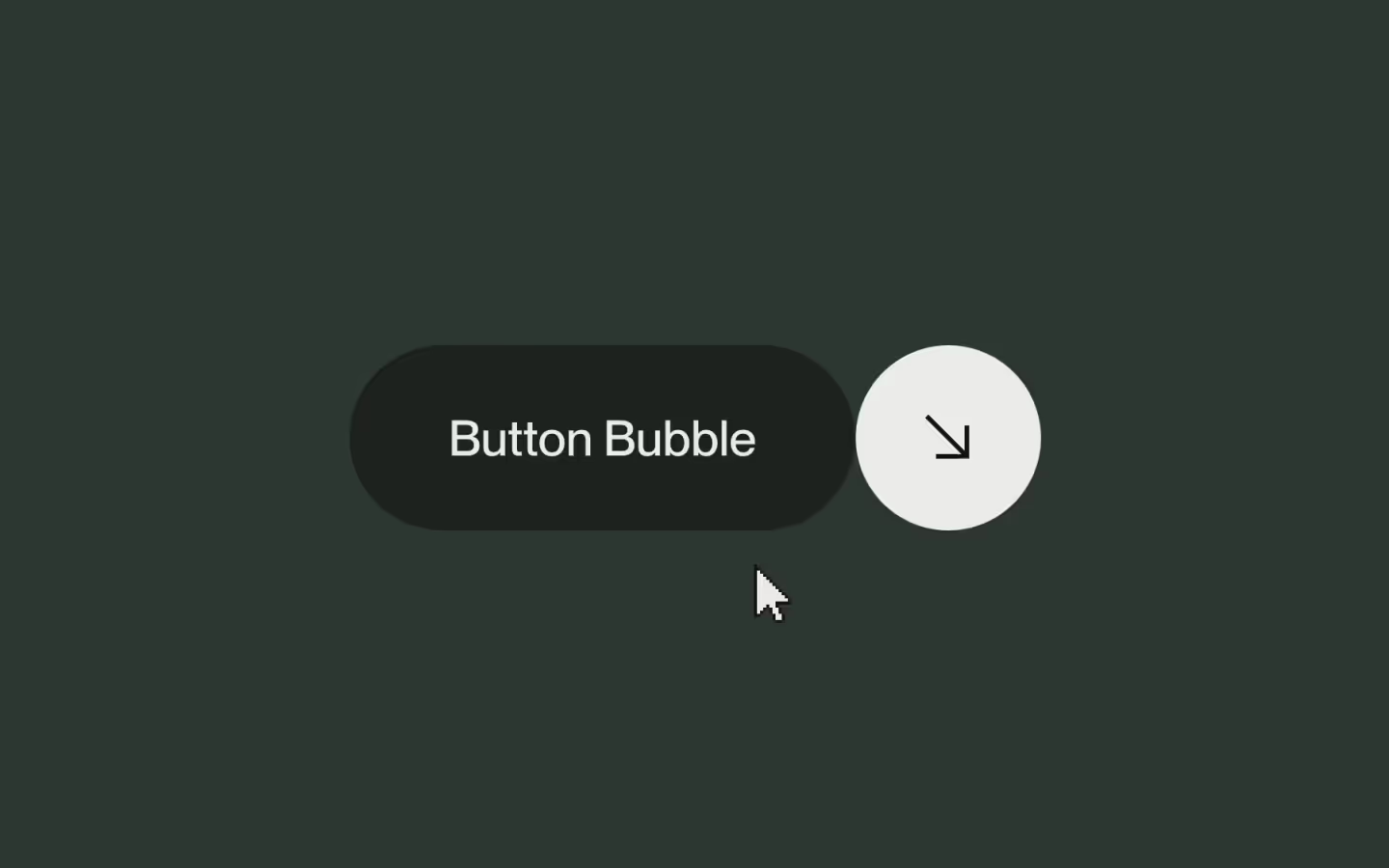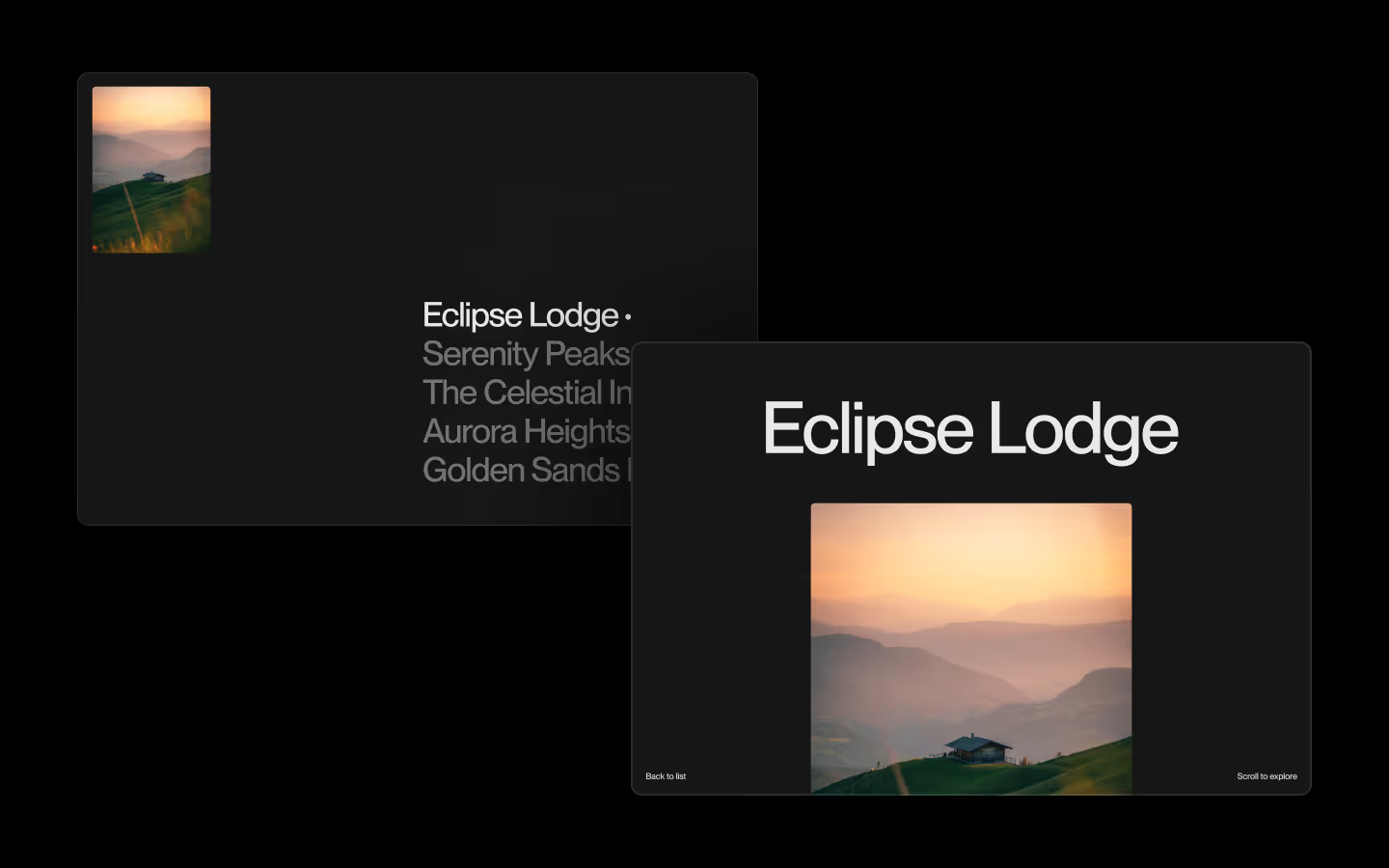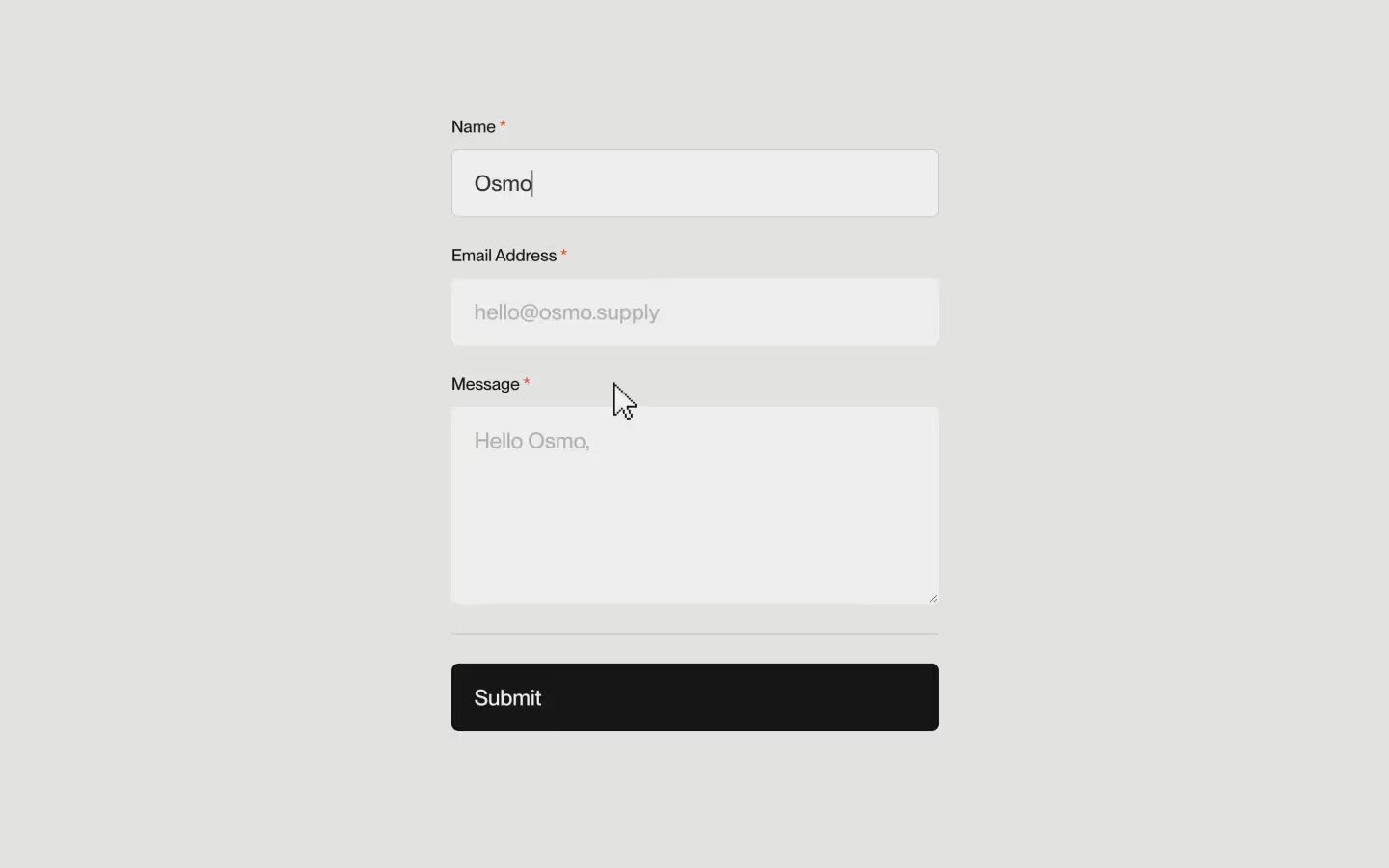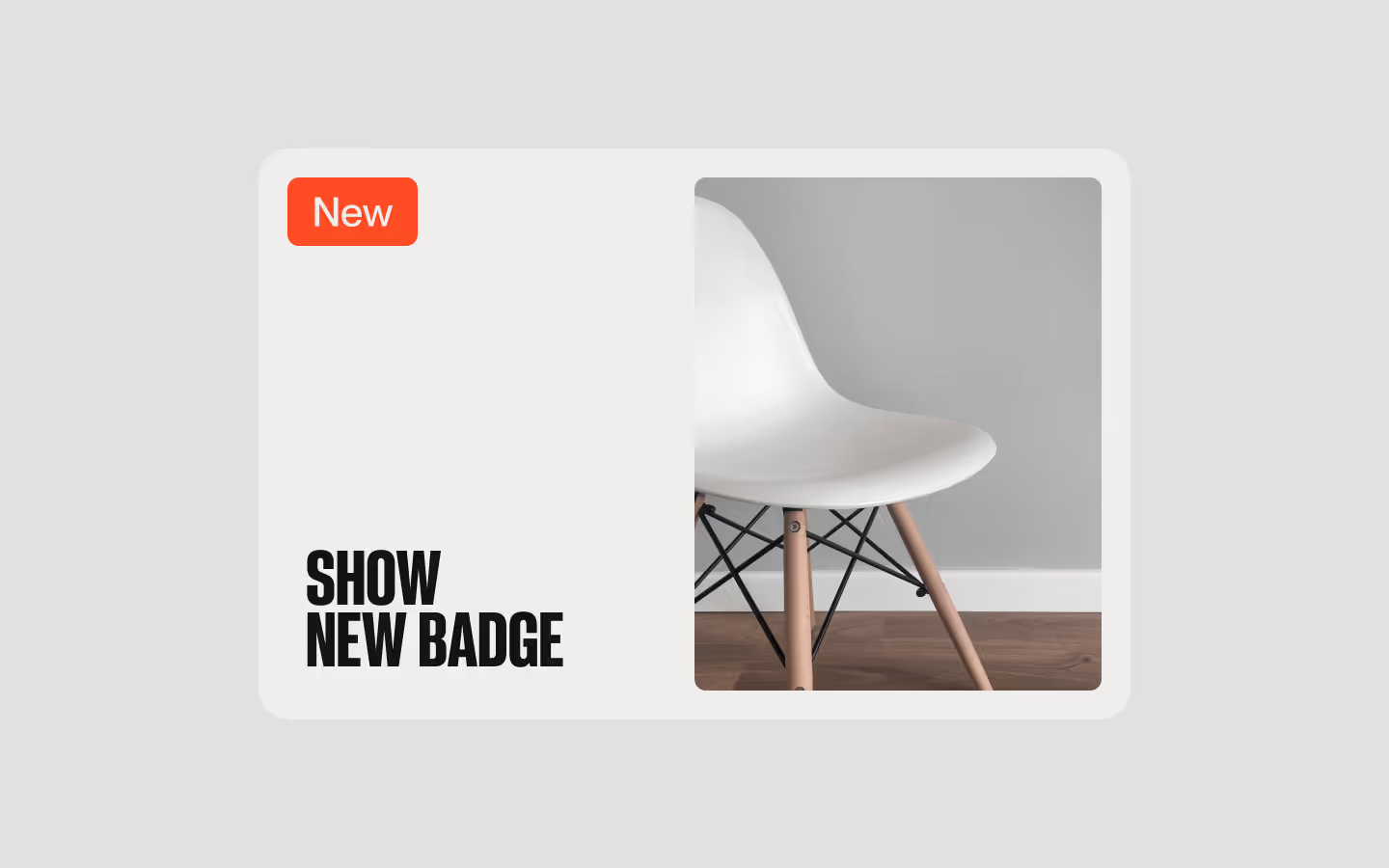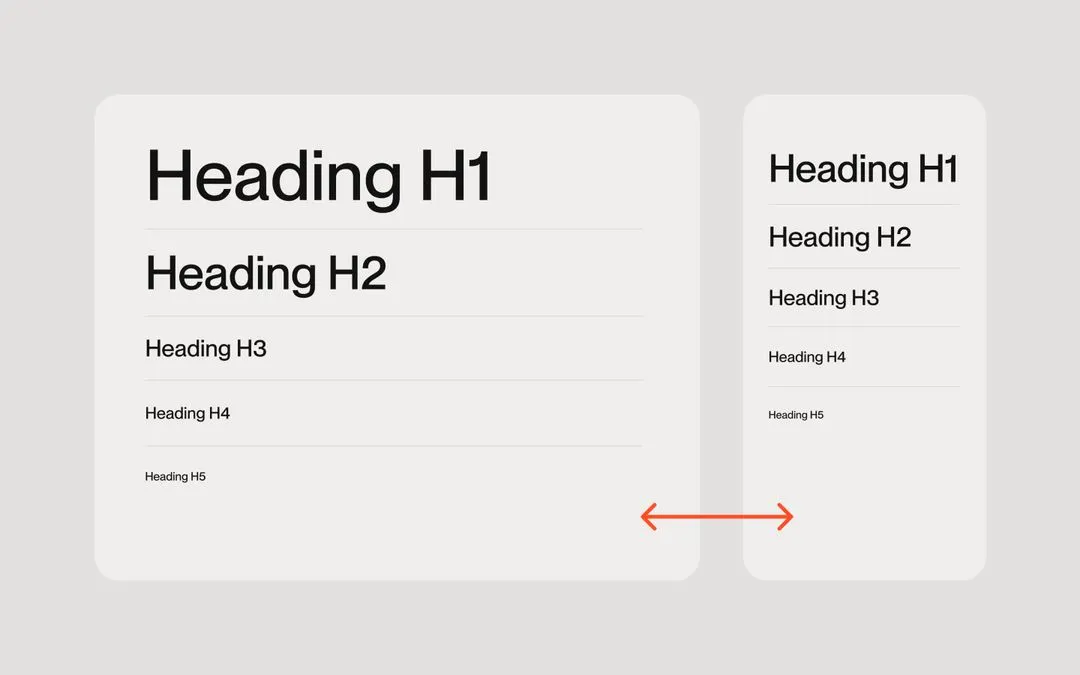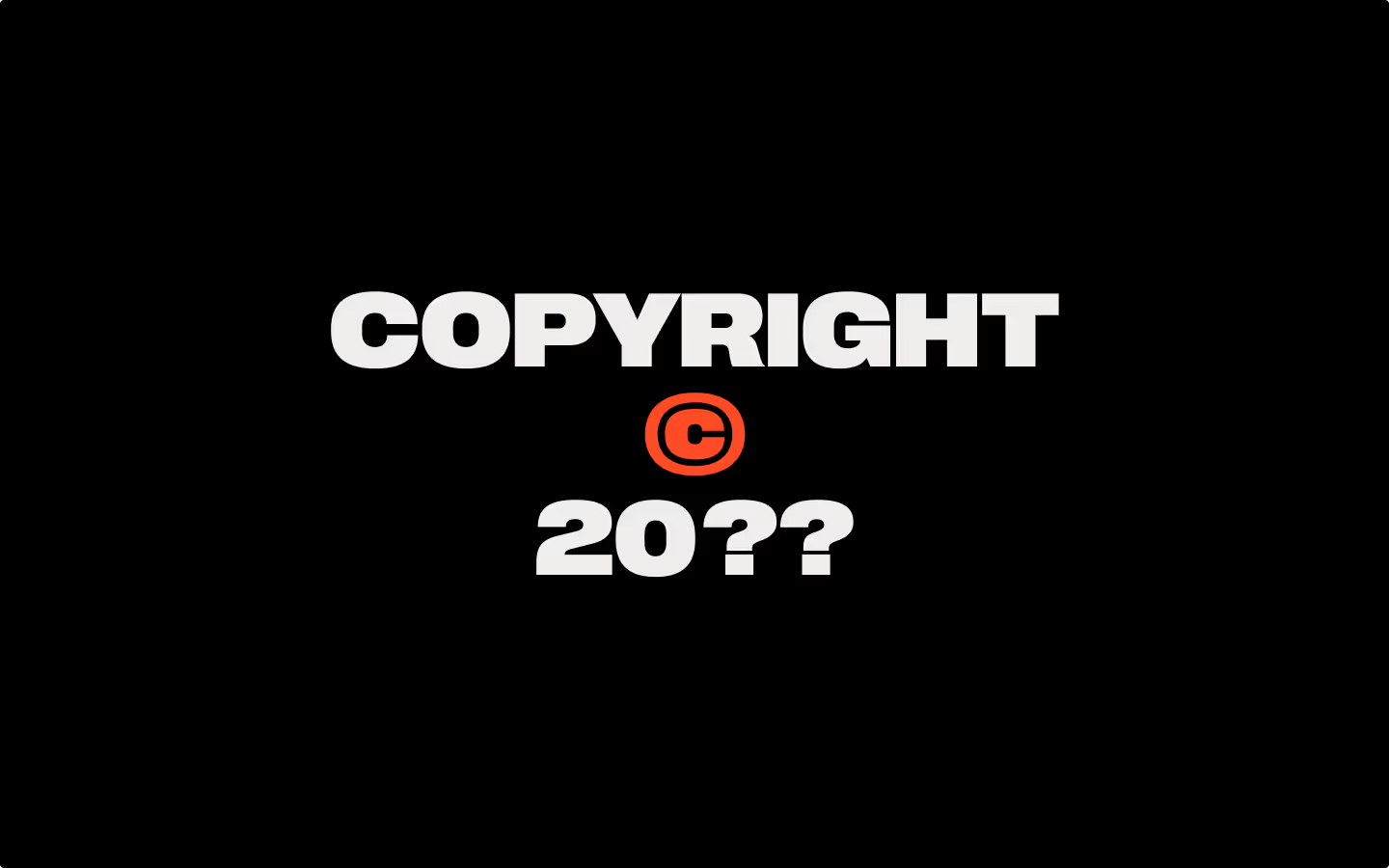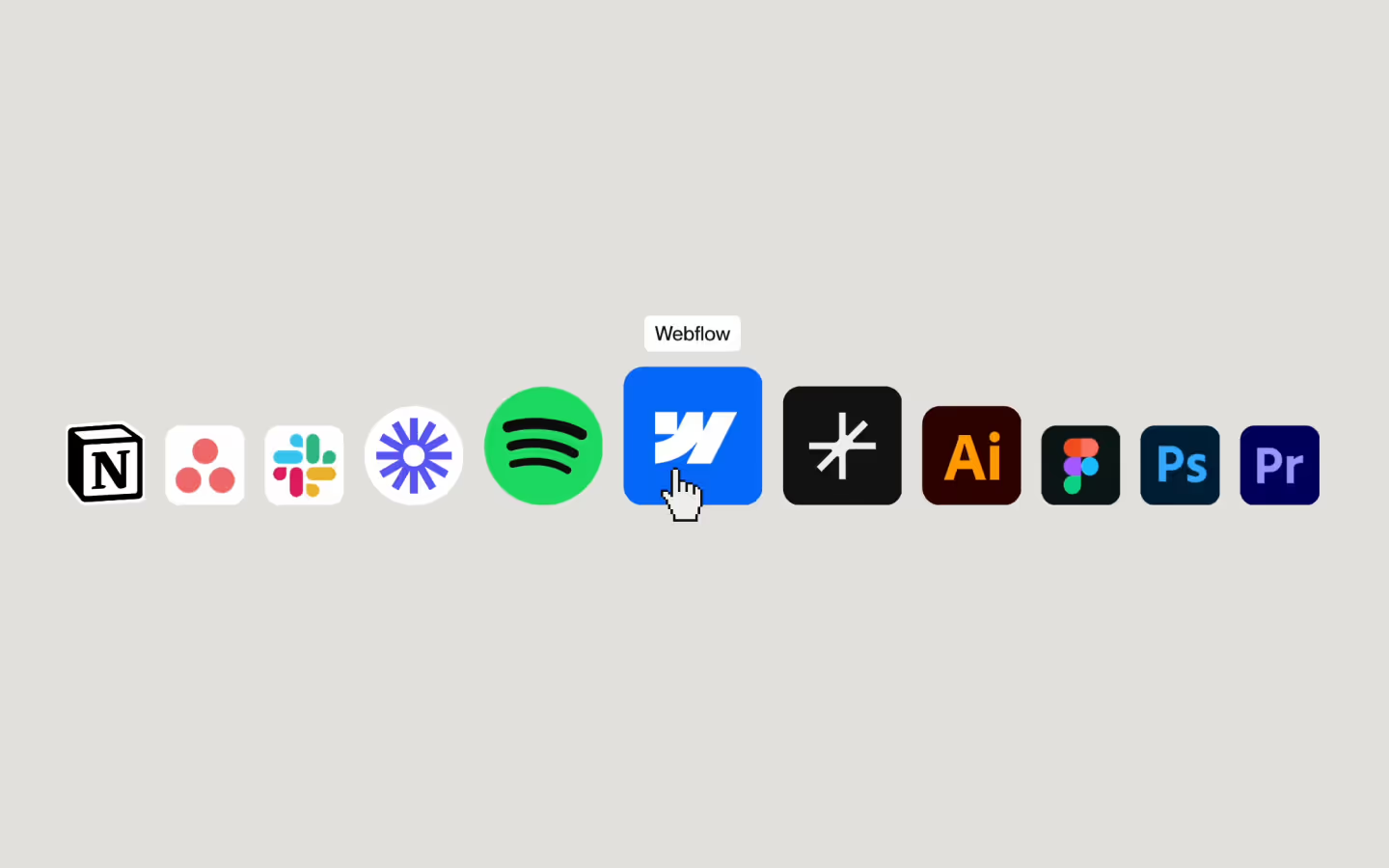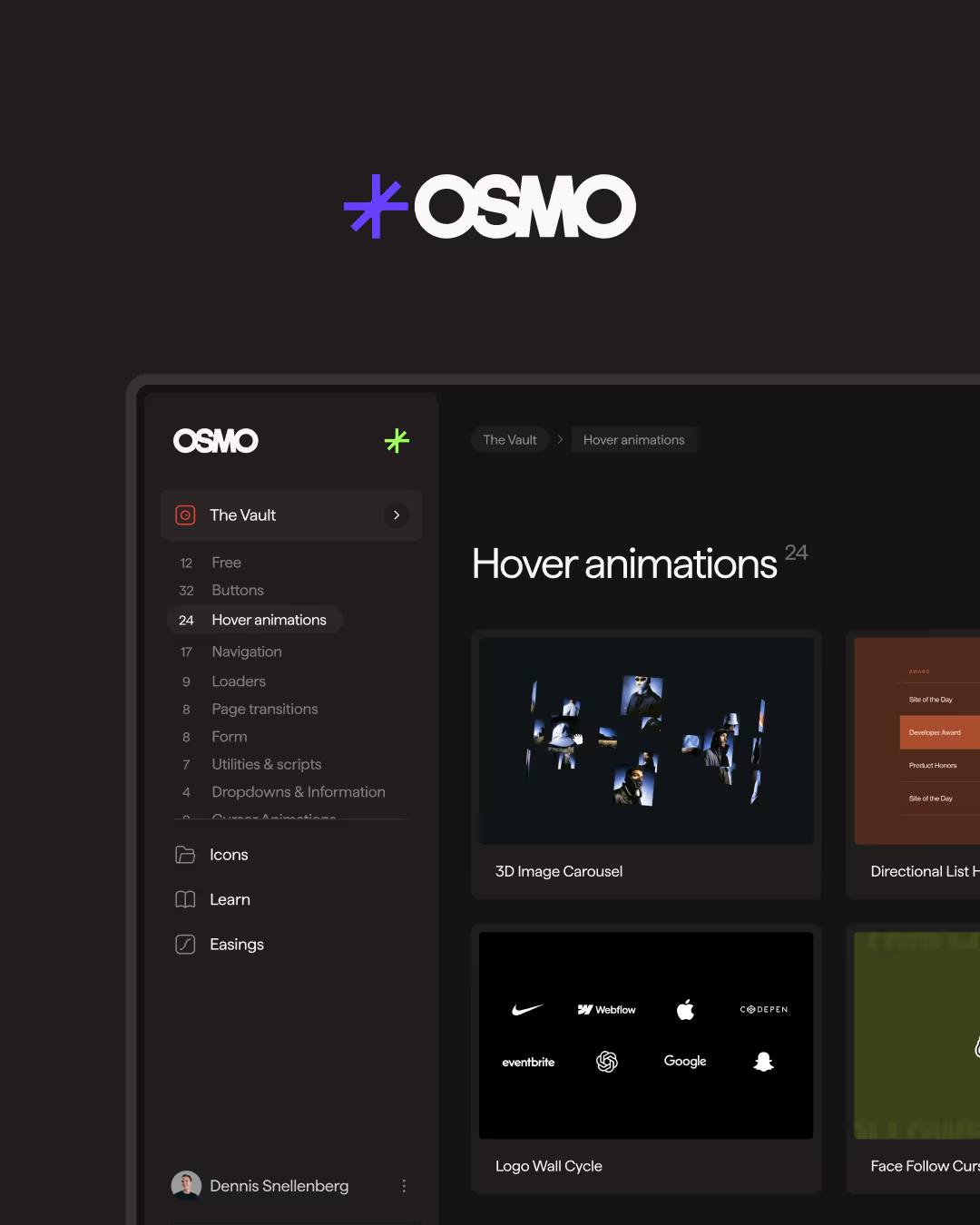Tilting Bouncing Button
Documentation
Webflow
Code
Setup: External Scripts
External Scripts in Webflow
Make sure to always put the External Scripts before the Javascript step of the resource.
In this video you learn where to put these in your Webflow project? Or how to include a paid GSAP Club plugin in your project?
HTML
Step 1: Copy structure to Webflow
Copy structure to Webflow
In the video below we described how you can copy + paste the structure of this resource to your Webflow project.
Copy to Webflow
Webflow structure is not required for this resource.
Step 1: Add HTML
HTML
<div class="btn-group">
<div class="btn-group__col">
<a href="#" class="btn-bounce">
<div class="btn-bounce-bg"></div>
<div class="btn-bounce-text__wrap">
<span class="btn-bounce-text">Bouncy Button</span>
</div>
</a>
</div>
<div class="btn-group__col">
<a href="#" class="btn-bounce is--secondary">
<div class="btn-bounce-bg is--secondary"></div>
<div class="btn-bounce-text__wrap">
<span class="btn-bounce-text">Bouncy Button</span>
</div>
</a>
</div>
</div>HTML structure is not required for this resource.
Step 2: Add CSS
CSS
:root{
--ease-elastic: linear(0, 0.55 7.5%, 0.85 12%, 0.95 14%, 1.03 16.5%, 1.09 20%, 1.13 22%, 1.14 23%, 1.15 24.5%, 1.15 26%, 1.13 28%, 1.11 31%, 1.05 39%, 1.02 43%, 0.99 47%, 0.98 52%, 0.97 59%, 1.002 81%, 1);
}
.btn-group {
grid-column-gap: 3em;
grid-row-gap: 3em;
justify-content: center;
align-items: flex-start;
display: flex;
}
.btn-bounce {
color: #113d28;
padding-left: 2em;
padding-right: 2em;
font-size: 1em;
text-decoration: none;
position: relative;
}
.btn-bounce.is--secondary {
color: #fff;
}
.btn-bounce-bg {
z-index: 0;
background-color: #55db9c;
border-radius: 100em;
position: absolute;
inset: 0%;
}
.btn-bounce-bg.is--secondary {
background-color: #55db9c26;
border: 1px solid #55db9c40;
}
.btn-bounce-text {
z-index: 1;
display: block;
position: relative;
}
.btn-bounce-text__wrap {
padding-top: 1.25em;
padding-bottom: 1.25em;
overflow: hidden;
}
/* Only apply hover animations if they are actually not supported */
@media (hover:hover) and (pointer:fine){
.btn-bounce,
.btn-bounce-text,
.btn-bounce-text__wrap{
transition: transform 0.65s var(--ease-elastic);
}
/* Fake a duplicate text element using text shadow without blur */
/* We save the distance in a variable for easy use in the CSS animation */
.btn-bounce-text{
--text-duplicate-distance: 3em;
text-shadow: 0px var(--text-duplicate-distance) currentColor;
}
/* Scale down the button and rotate it slightly */
.btn-bounce:hover { transform: scale(0.92) rotate(-3deg); }
/* Rotate the text wrapper in the opposite direction so it appears straight */
.btn-bounce:hover .btn-bounce-text__wrap{ transform: rotate(3deg); }
/* Move up the text span to reveal its text-shadow */
.btn-bounce:hover .btn-bounce-text{ transform: translate(0px, calc(-1 * var(--text-duplicate-distance))); }
}Step 2: Add custom Javascript
Custom Javascript in Webflow
In this video, Ilja gives you some guidance about using JavaScript in Webflow:
Step 2: Add Javascript
Step 3: Add Javascript
Javascript
Step 3: Add custom CSS
Step 2: Add custom CSS
Custom CSS in Webflow
Curious about where to put custom CSS in Webflow? Ilja explains it in the below video:
CSS
:root{
--ease-elastic: linear(
0,
0.55 7.5%,
0.85 12%,
0.95 14%,
1.03 16.5%,
1.09 20%,
1.13 22%,
1.14 23%,
1.15 24.5%,
1.15 26%,
1.13 28%,
1.11 31%,
1.05 39%,
1.02 43%,
0.99 47%,
0.98 52%,
0.97 59%,
1.002 81%,
1
);
}
/* Only apply hover animations if they are actually not supported */
@media (hover:hover) and (pointer:fine){
.btn-bounce,
.btn-bounce-text,
.btn-bounce-text__wrap{
transition: transform 0.65s var(--ease-elastic);
}
/* Fake a duplicate text element using text shadow without blur */
/* We save the distance in a variable for easy use in the CSS animation */
.btn-bounce-text{
--text-duplicate-distance: 3em;
text-shadow: 0px var(--text-duplicate-distance) currentColor;
}
/* Scale down the button and rotate it slightly */
.btn-bounce:hover { transform: scale(0.92) rotate(-3deg); }
/* Rotate the text wrapper in the opposite direction so it appears straight */
.btn-bounce:hover .btn-bounce-text__wrap{ transform: rotate(3deg); }
/* Move up the text span to reveal its text-shadow */
.btn-bounce:hover .btn-bounce-text{ transform: translate(0px, calc(-1 * var(--text-duplicate-distance))); }
}Documentation
To create a CSS easing curve with a bounce effect, you can plot a bunch of points in a 'linear' curve. If you check our curve, you'll find that we move from 0 to 1 but during that path, we also move 'past' a value of 1, creating the signature bounciness of your element, basically animating further than it has to, before animating to the final value defined in your CSS (when the curve is at 1 again).
The reason there's so many 'coordinates' in the ease, is to mimic a smooth curve. After all, a Linear Ease will draw a straight line from point to point. So if you have many coordinates, and make small incremental adjustments, it almost looks like a smooth curve. Feel free to experiment with all the values!
Resource details
Last updated
September 30, 2025
Category
Buttons
Need help?
Join Slack



